Year 1 Number Bonds up to 20 worksheets
Emoji Number Bonds to 20
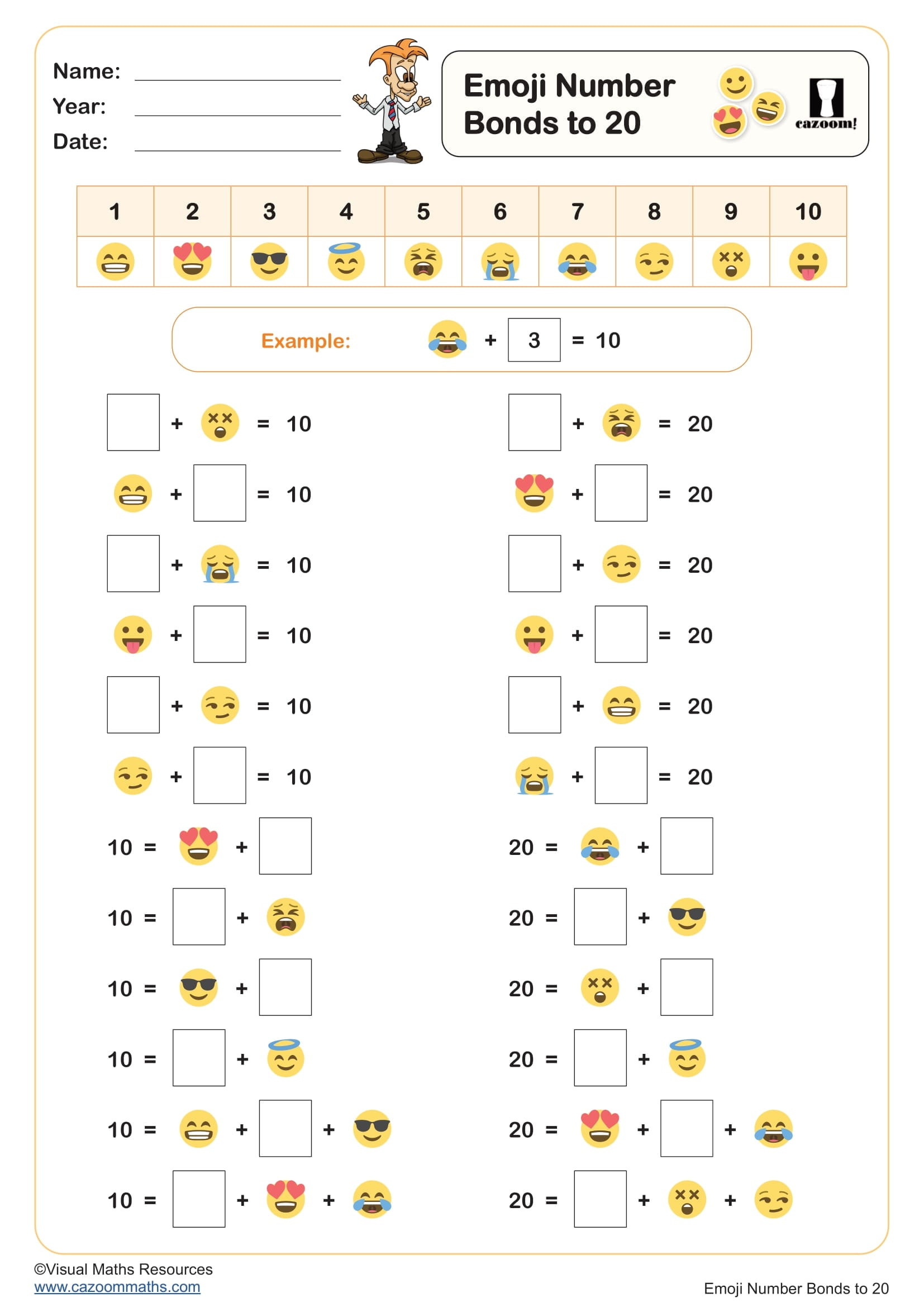
Making 10
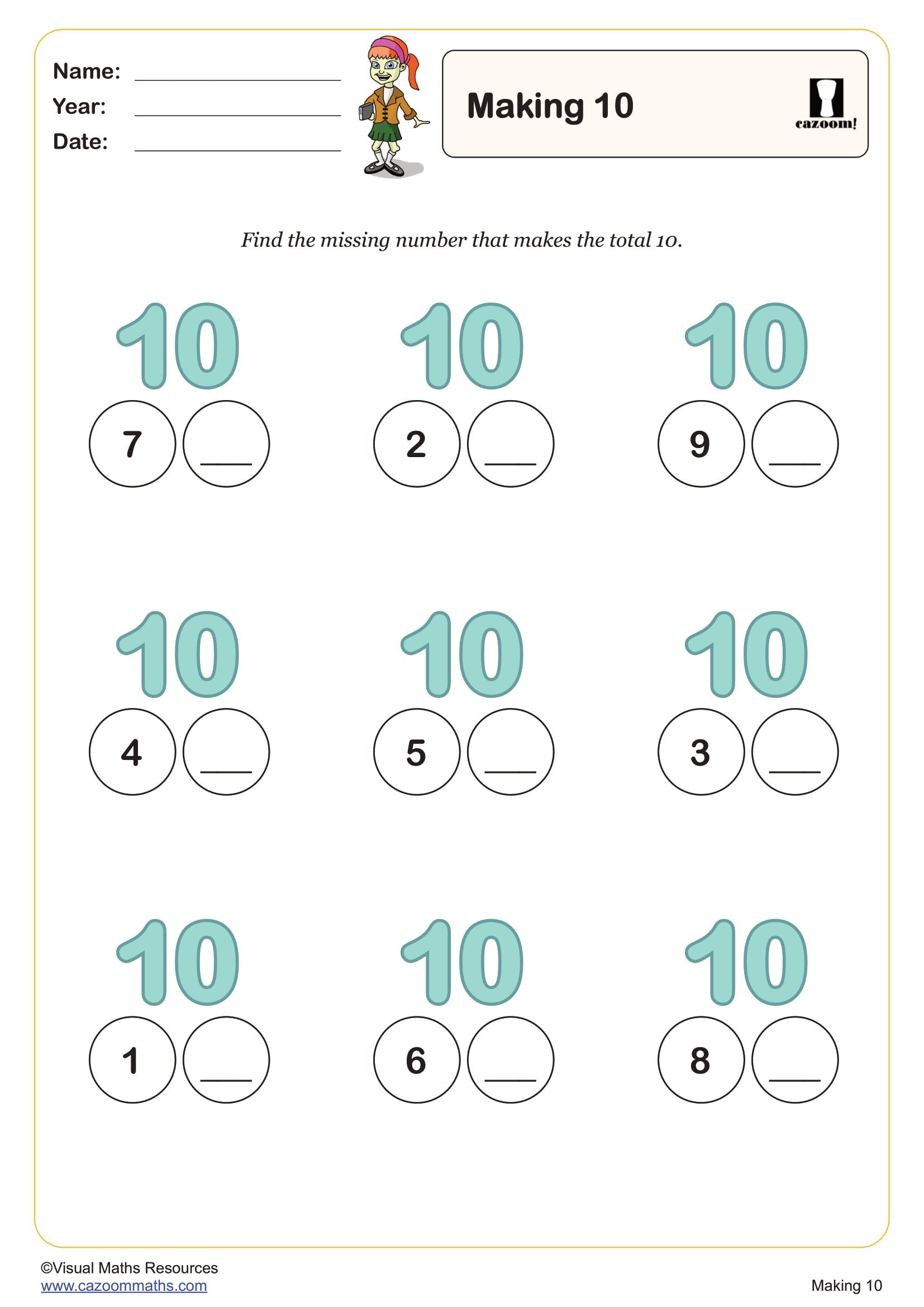
Making 10 (Blanks)
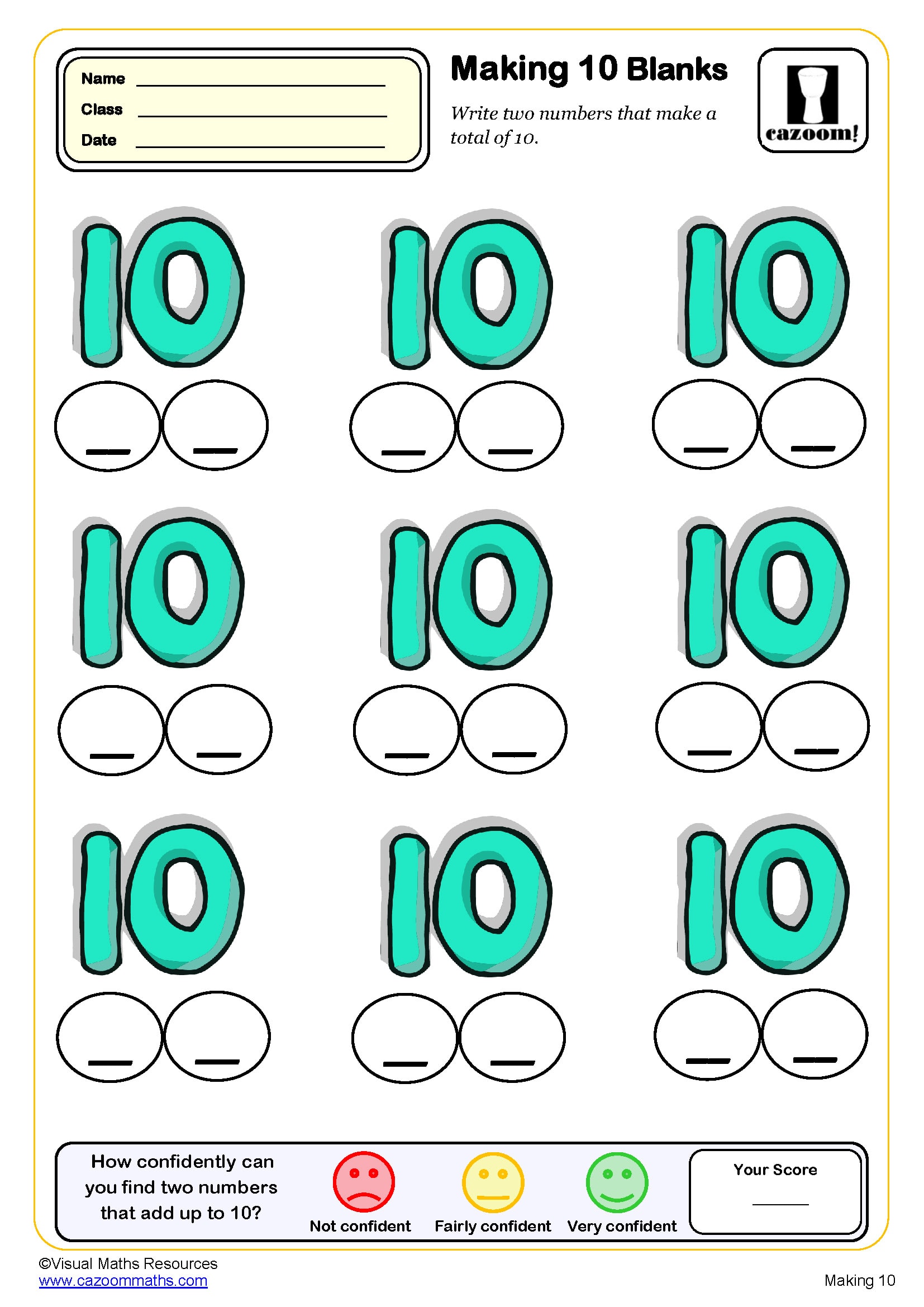
Making 10 with three numbers
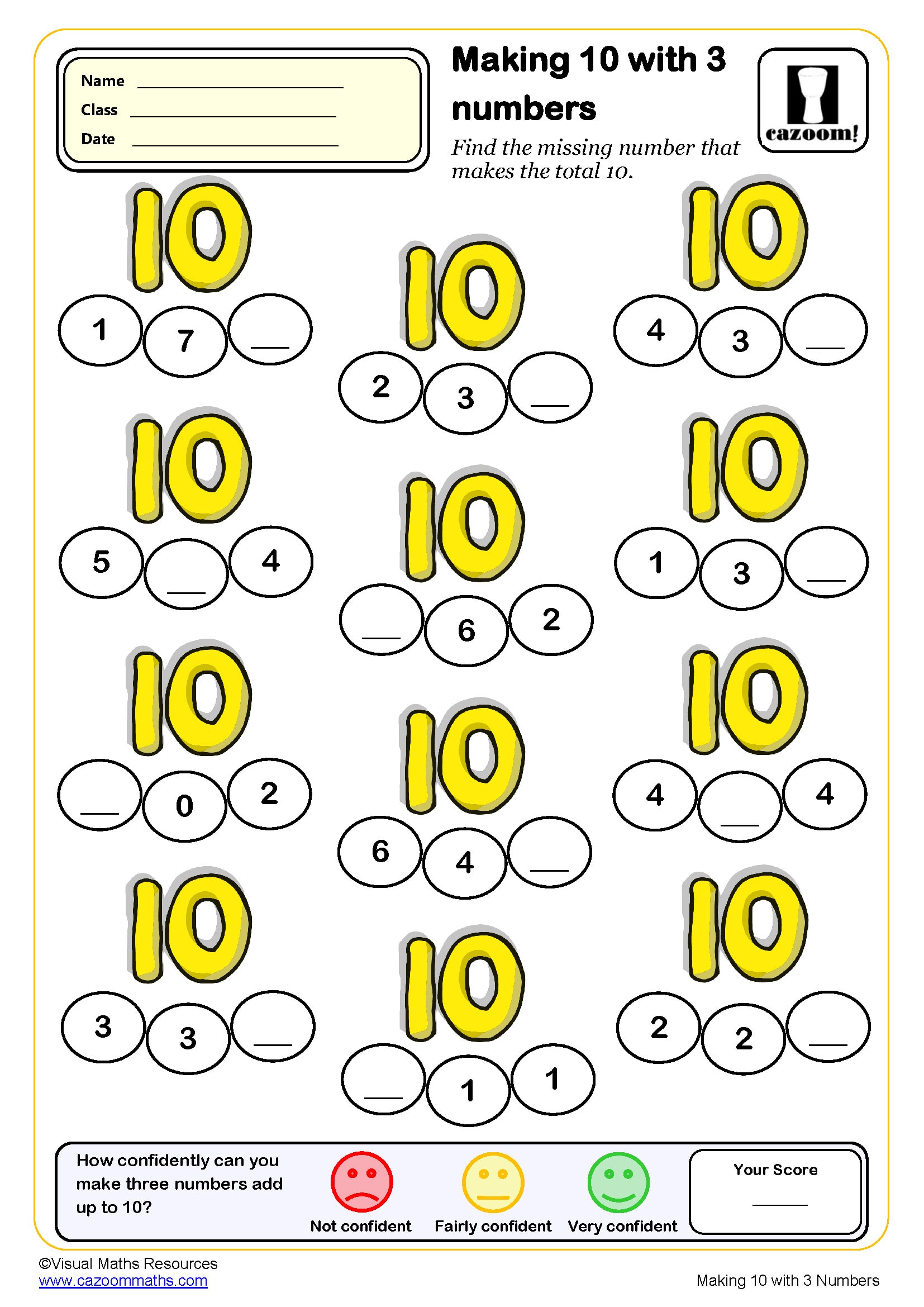
Making 10 with three numbers (Blanks)
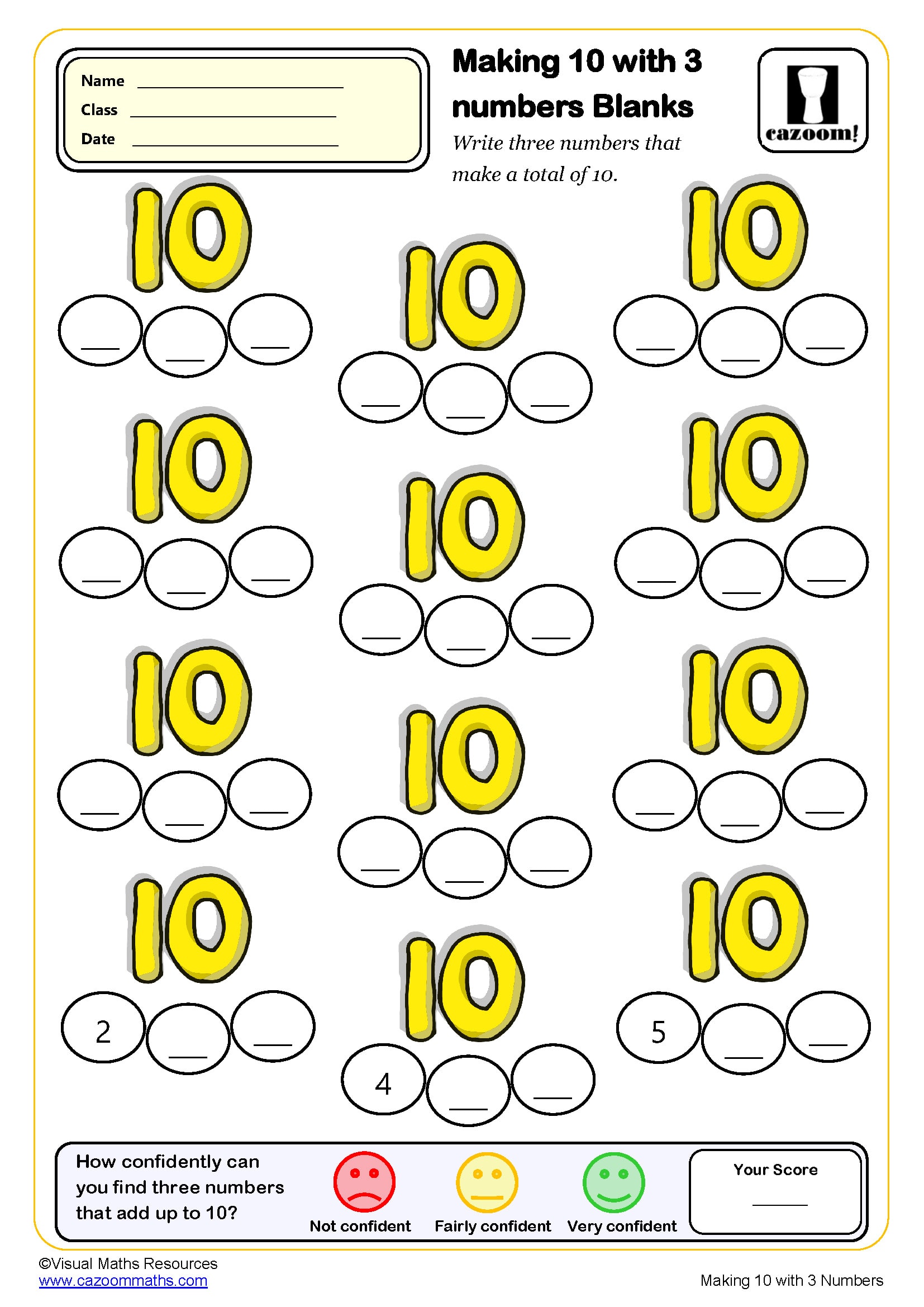
Making 15
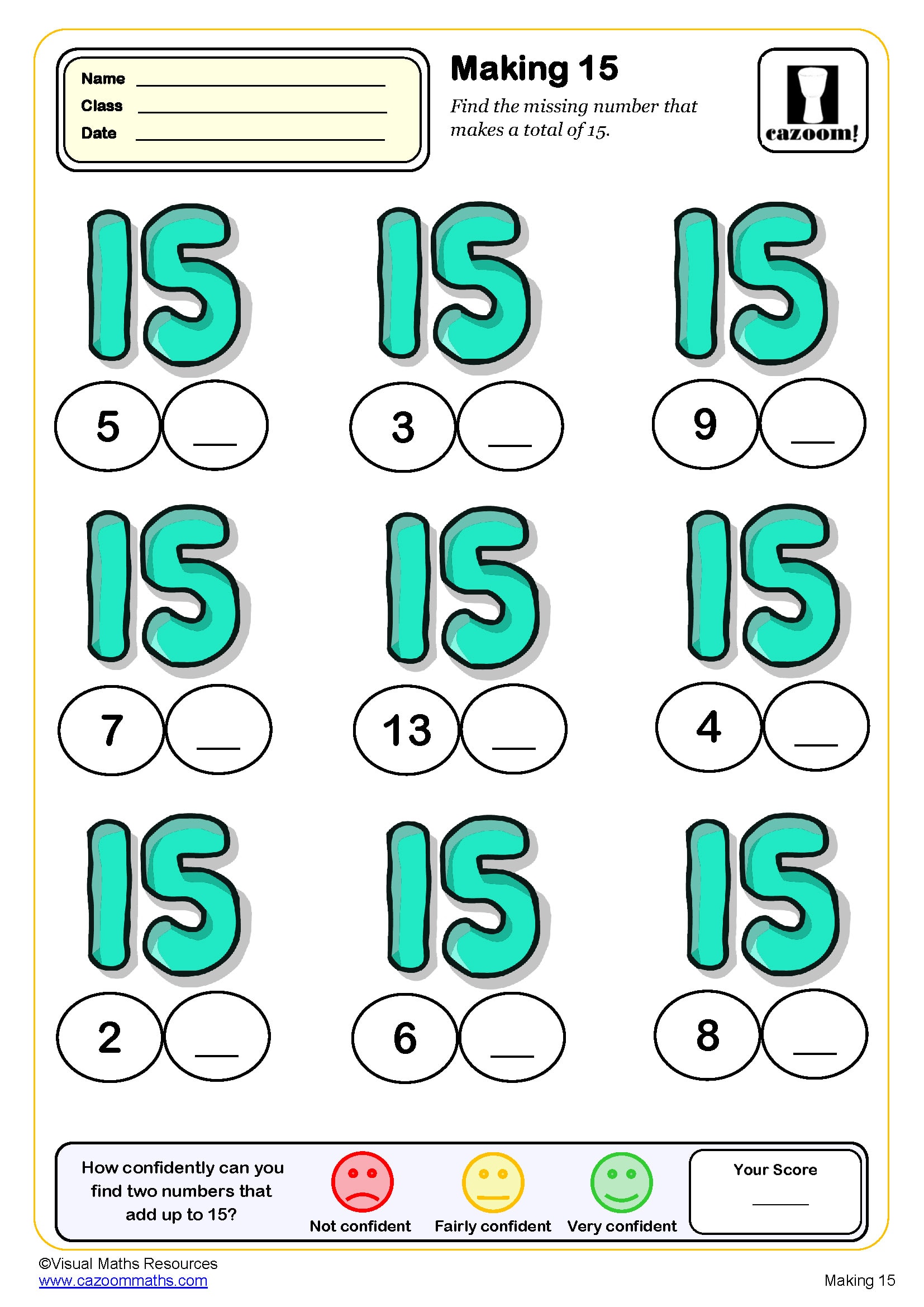
Making 15 (Blanks)
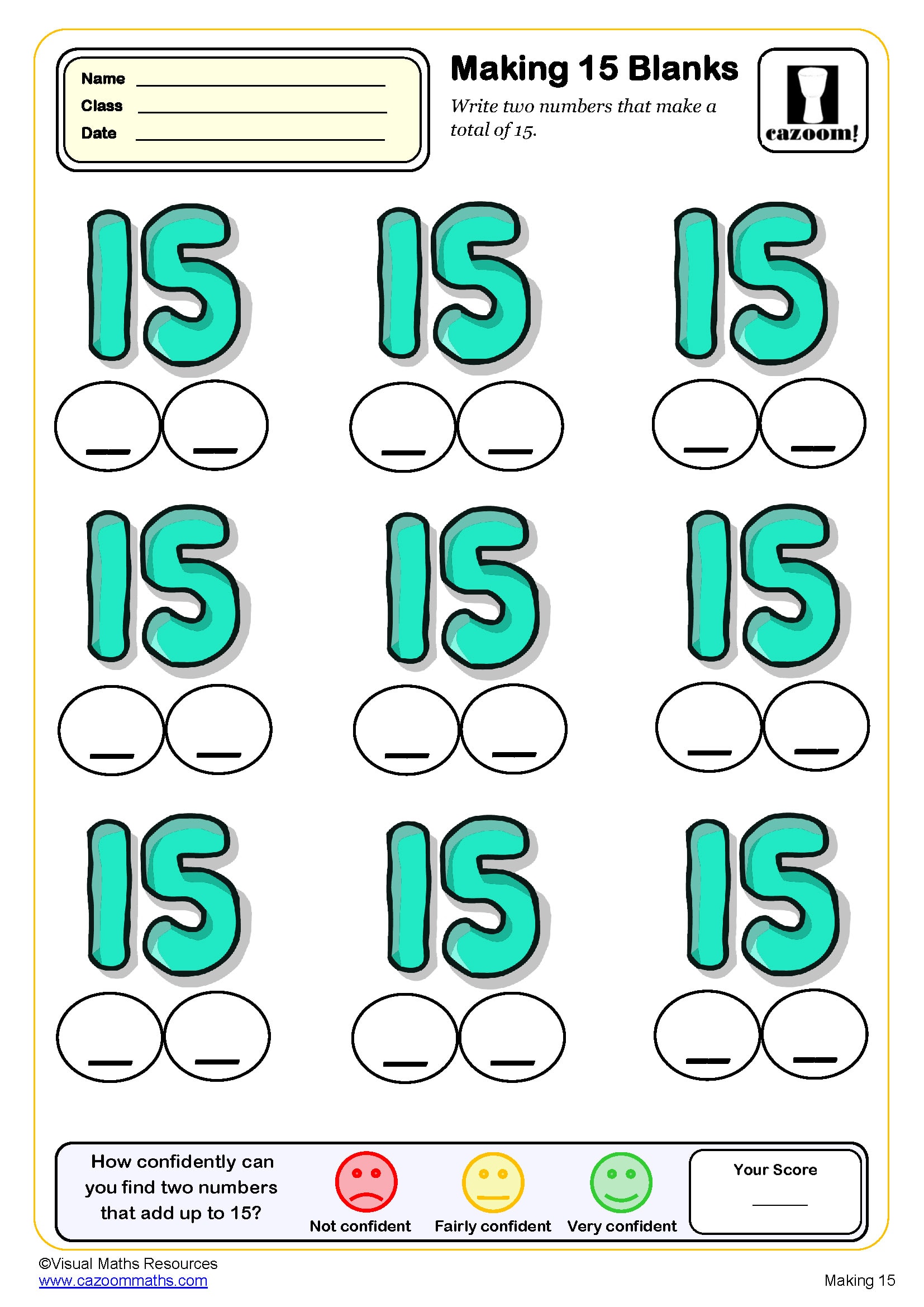
Making 18
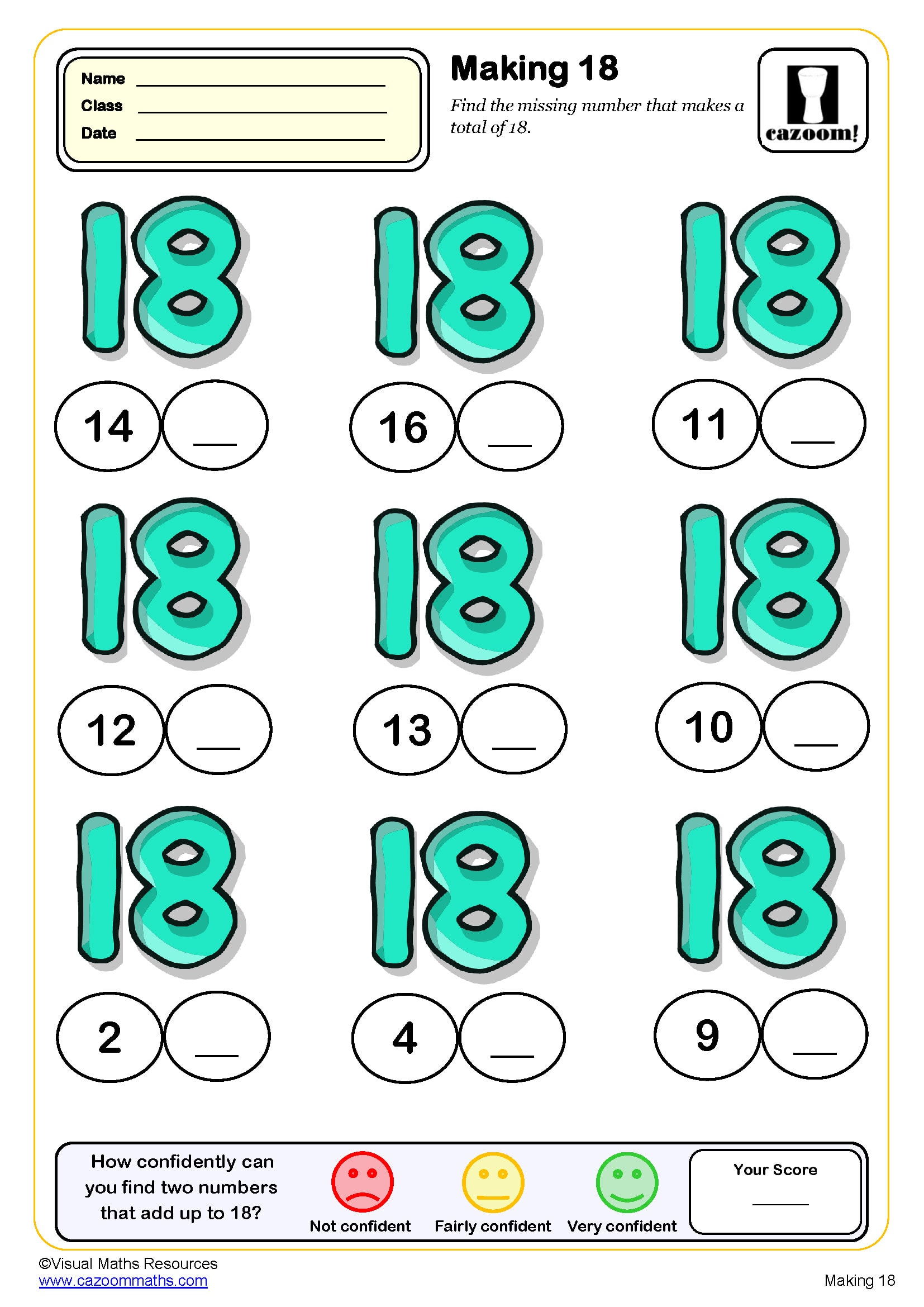
Making 18 (Blanks)
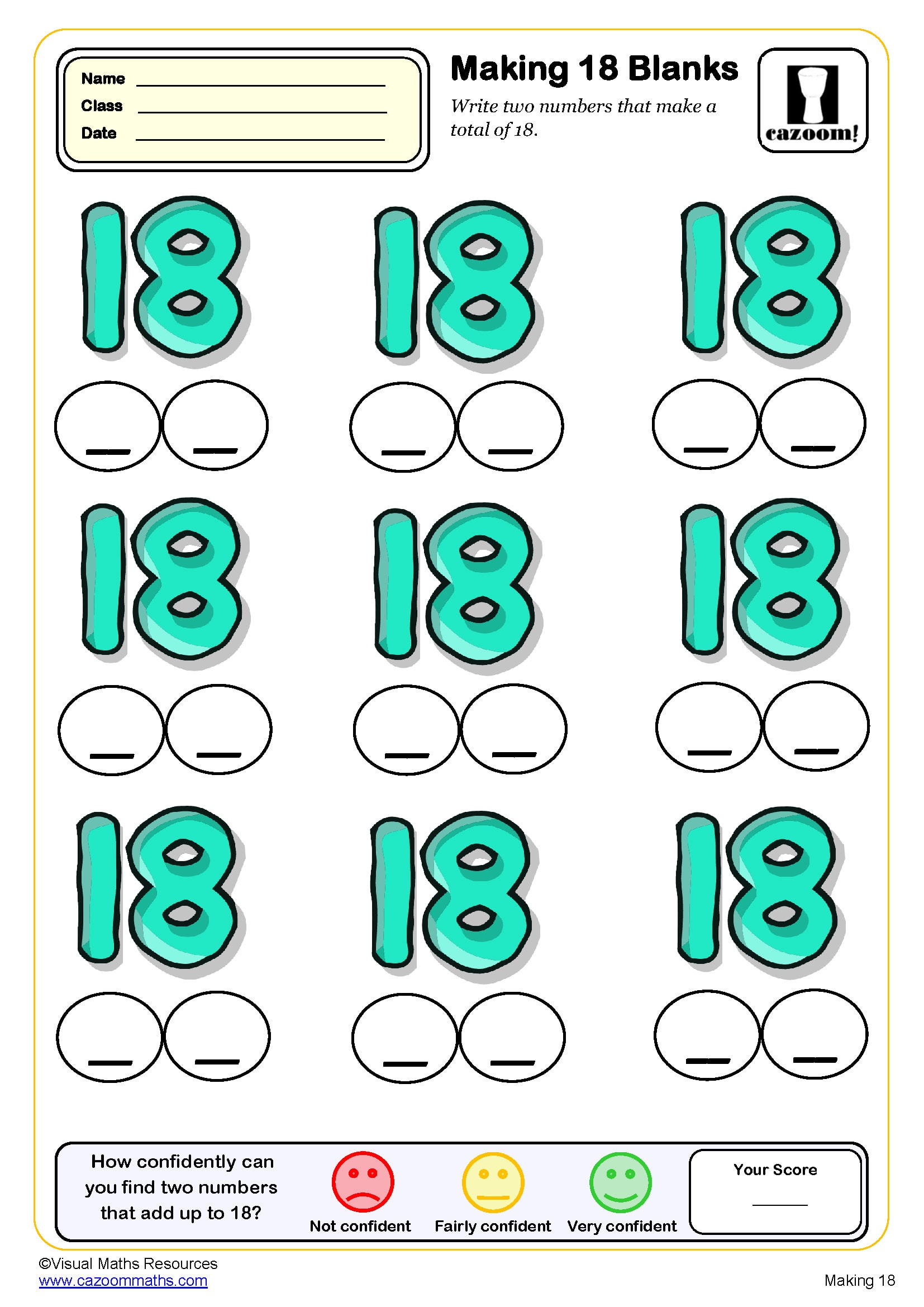
Making 20 (A)

Making 20 (B)
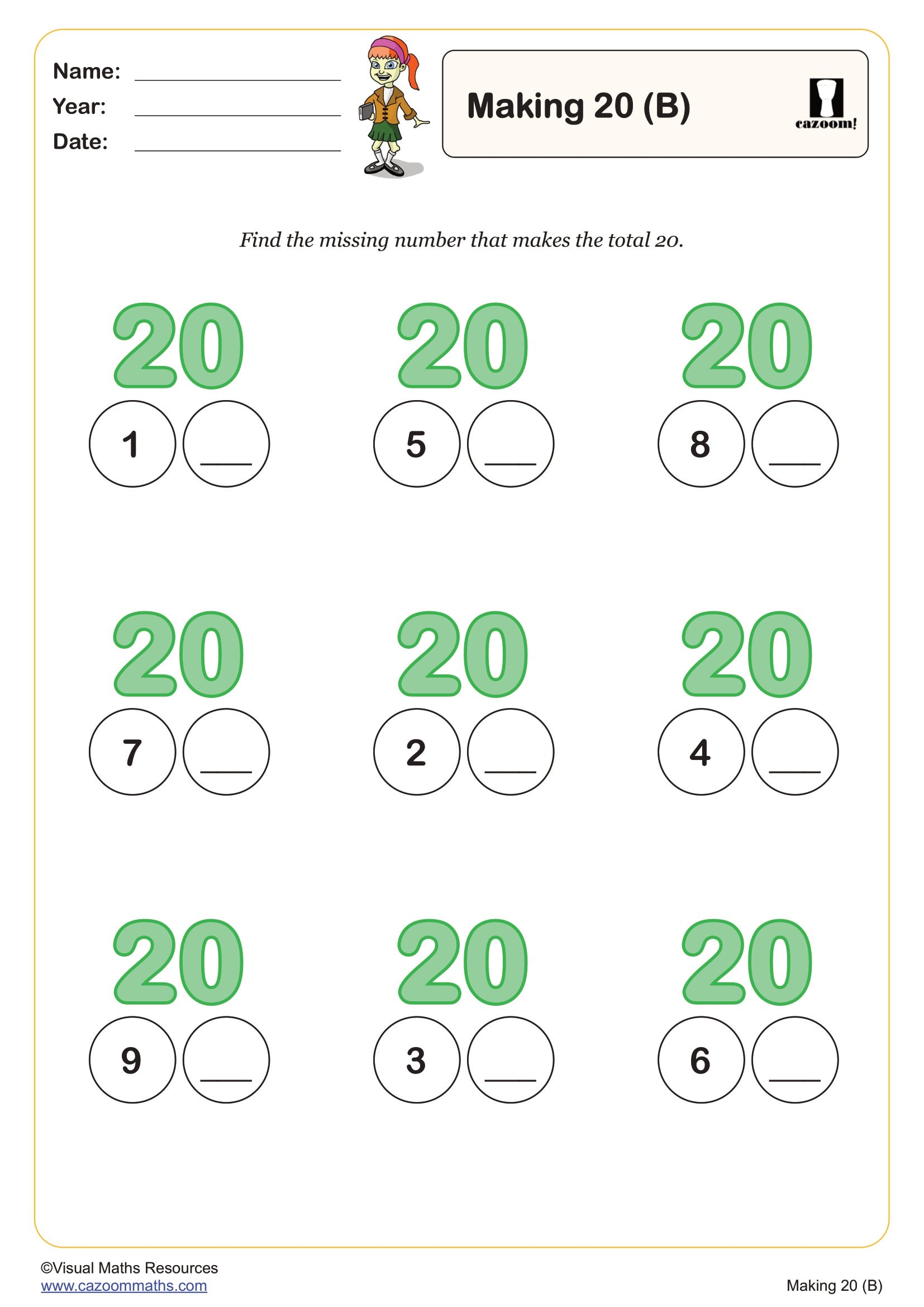
Making 20 (Blanks)
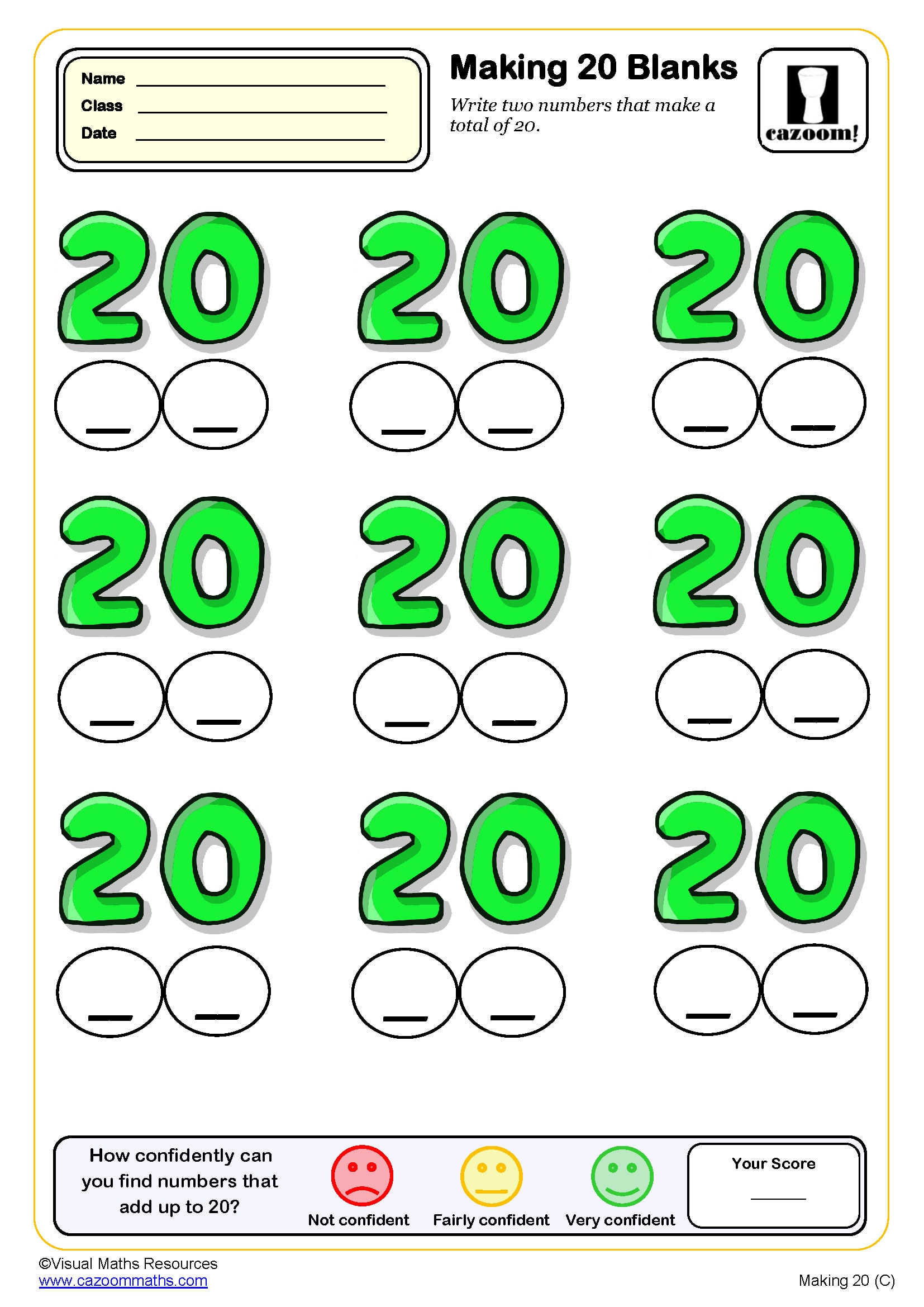
Making 20 (C)
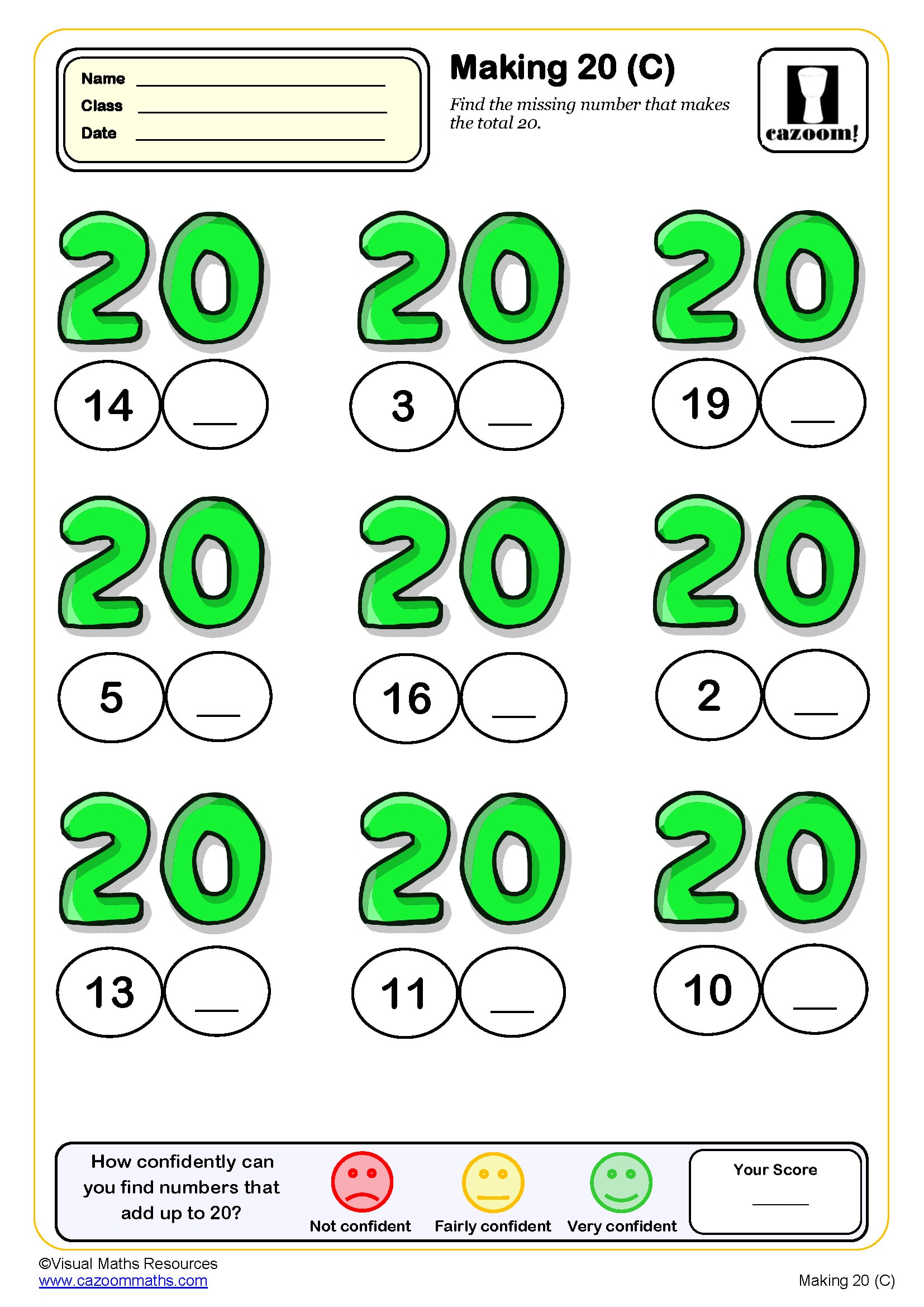
Making 20 with three numbers
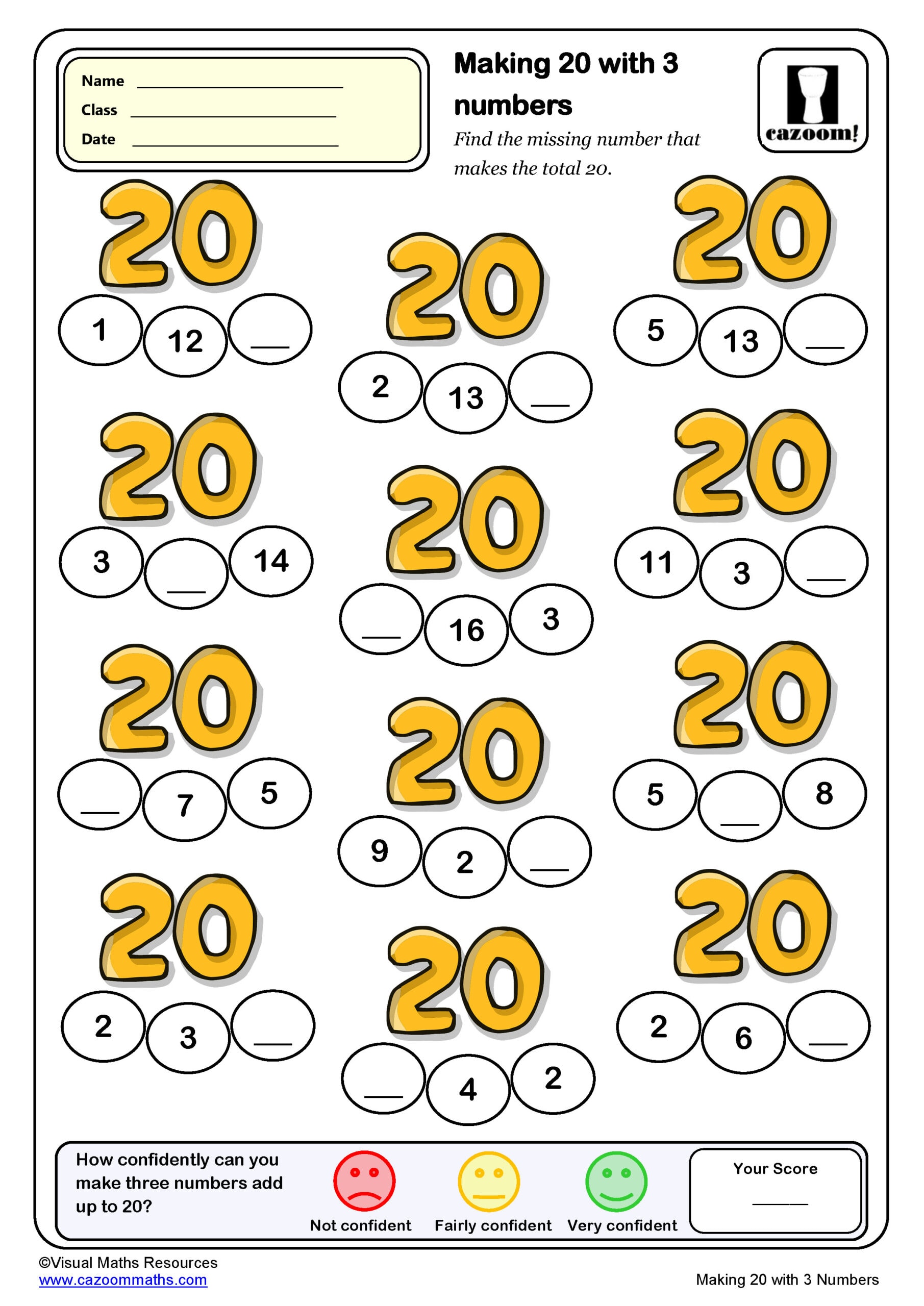
Making 20 with three numbers (Blanks)
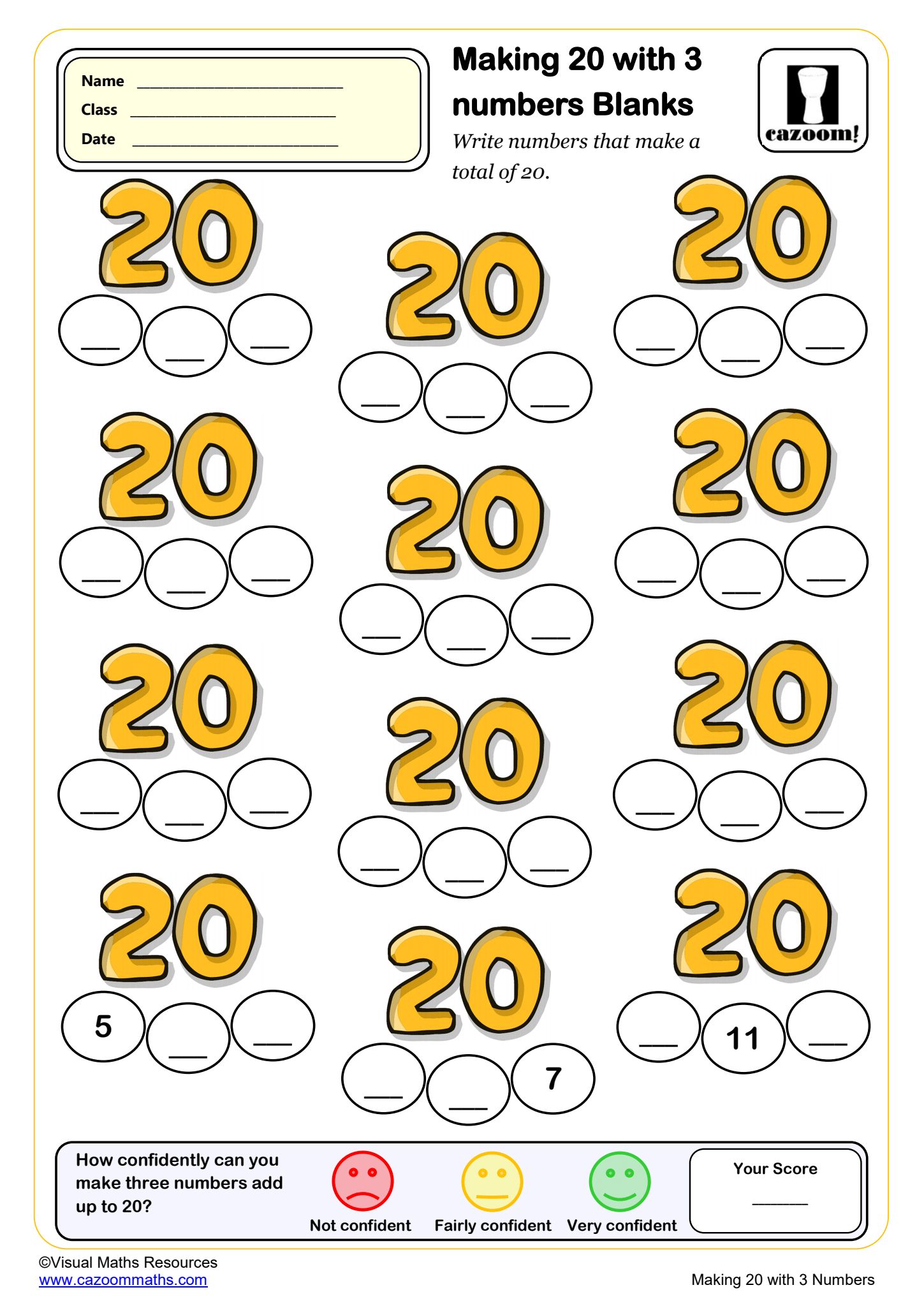
Making 7
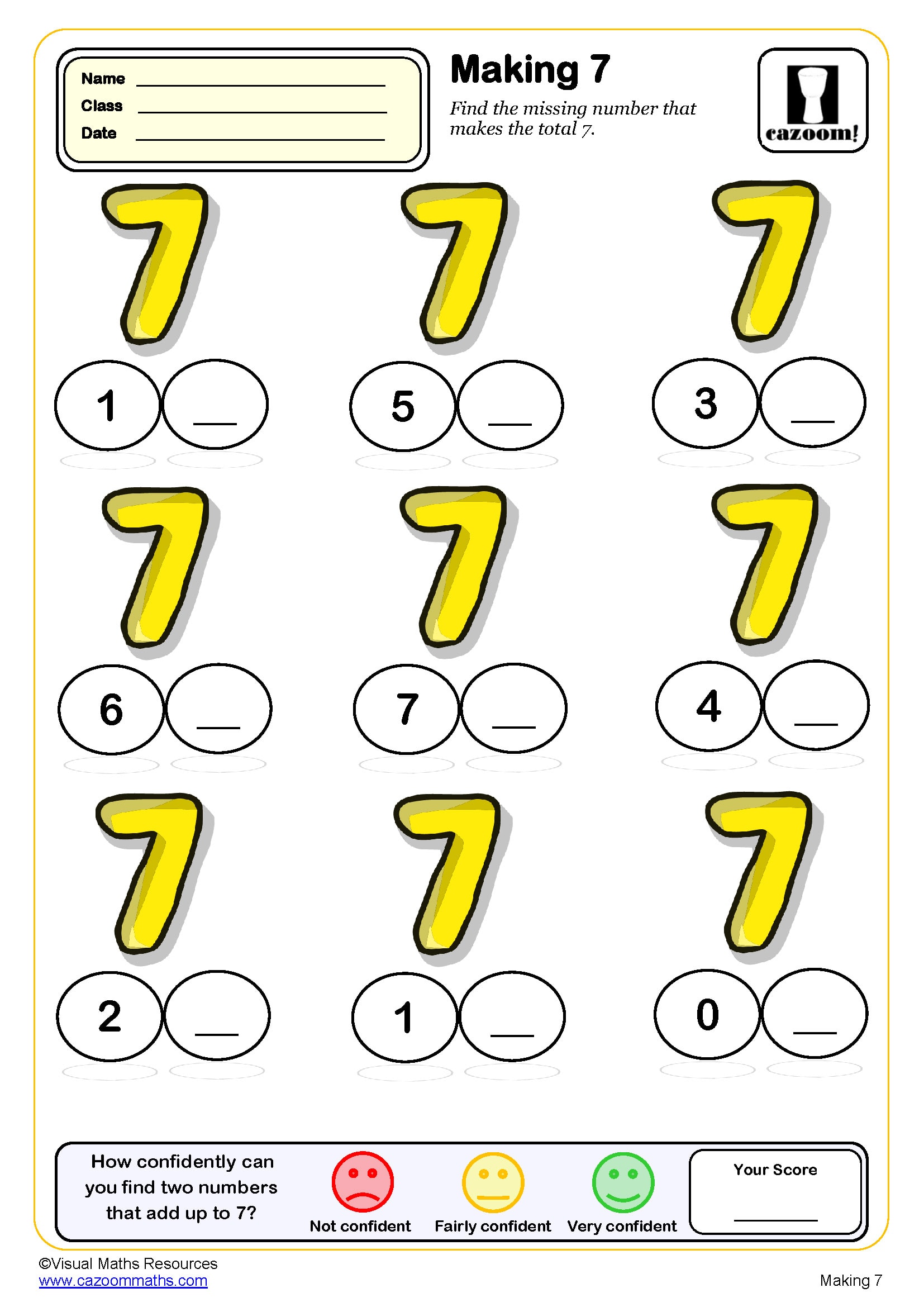
Making 7 (Blanks)
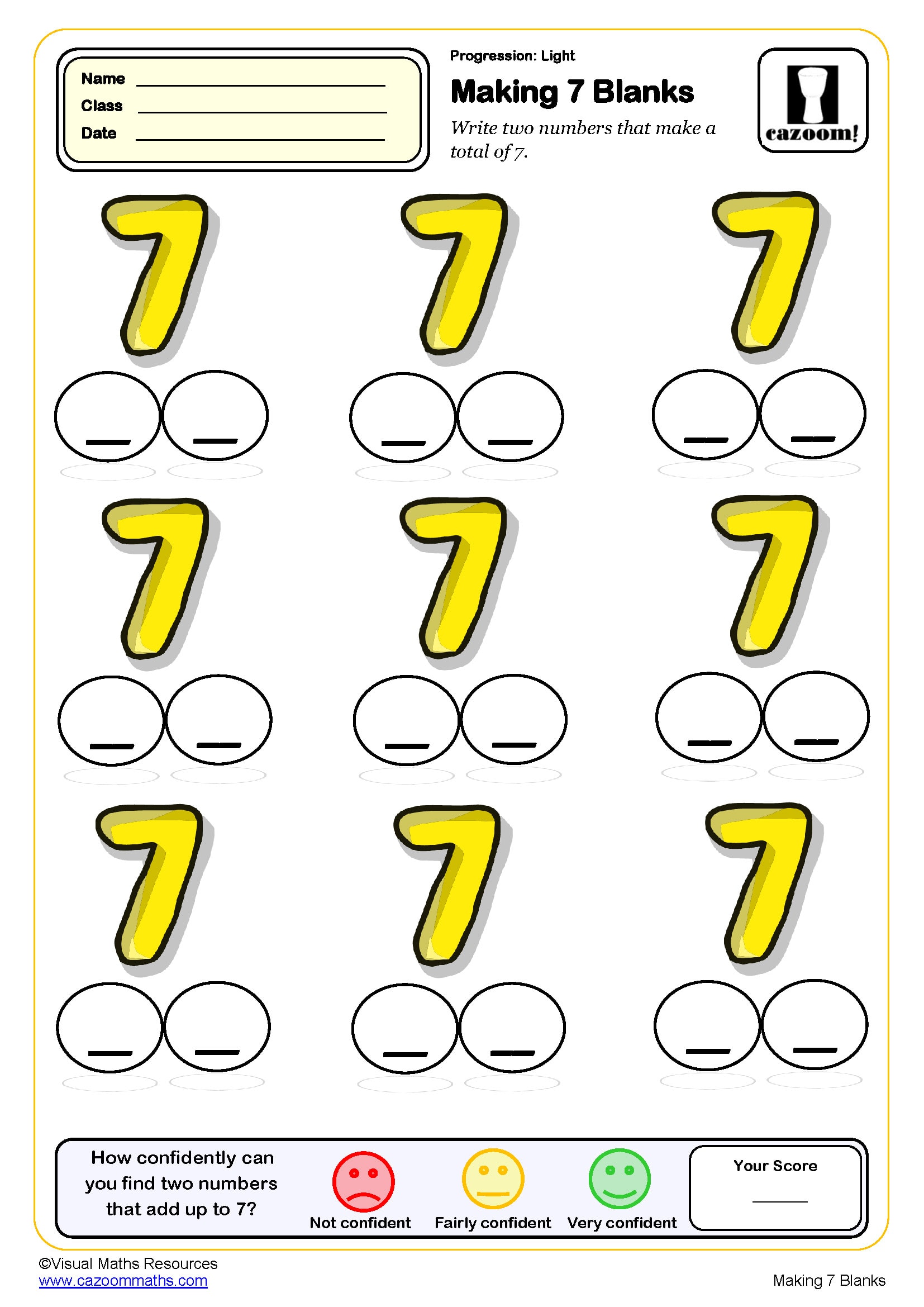
Making 8
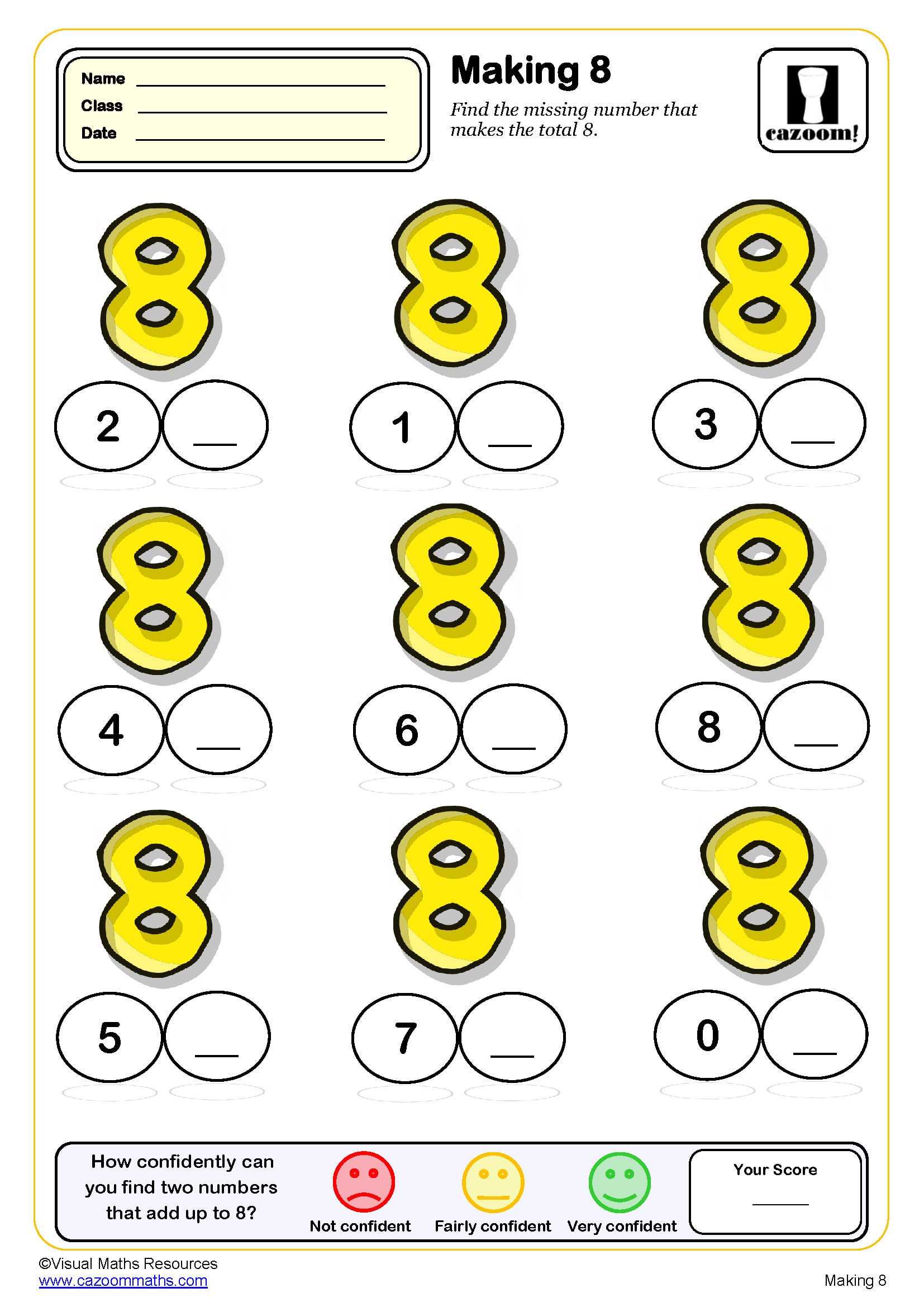
Making 8 (Blanks)
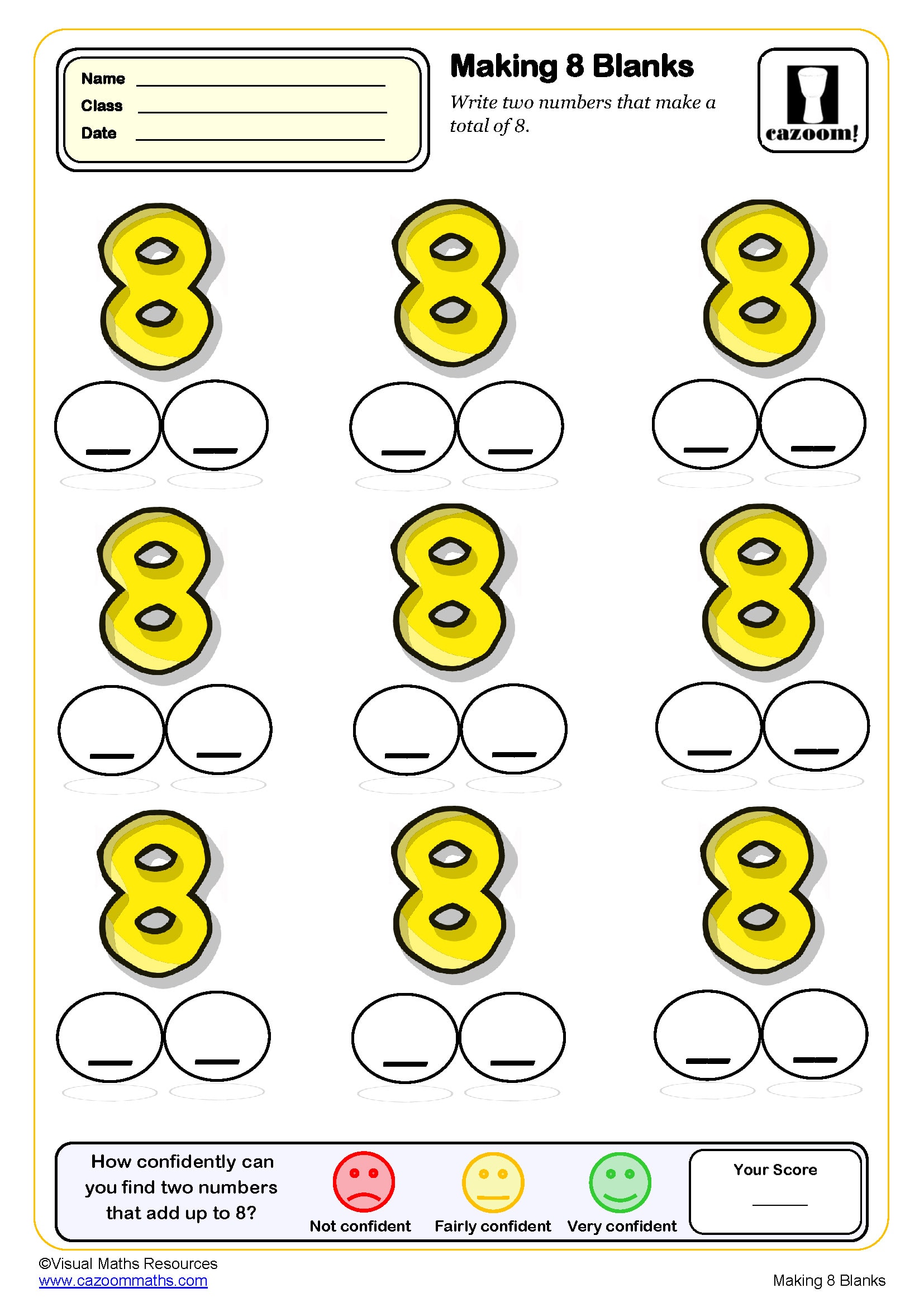
Making 9
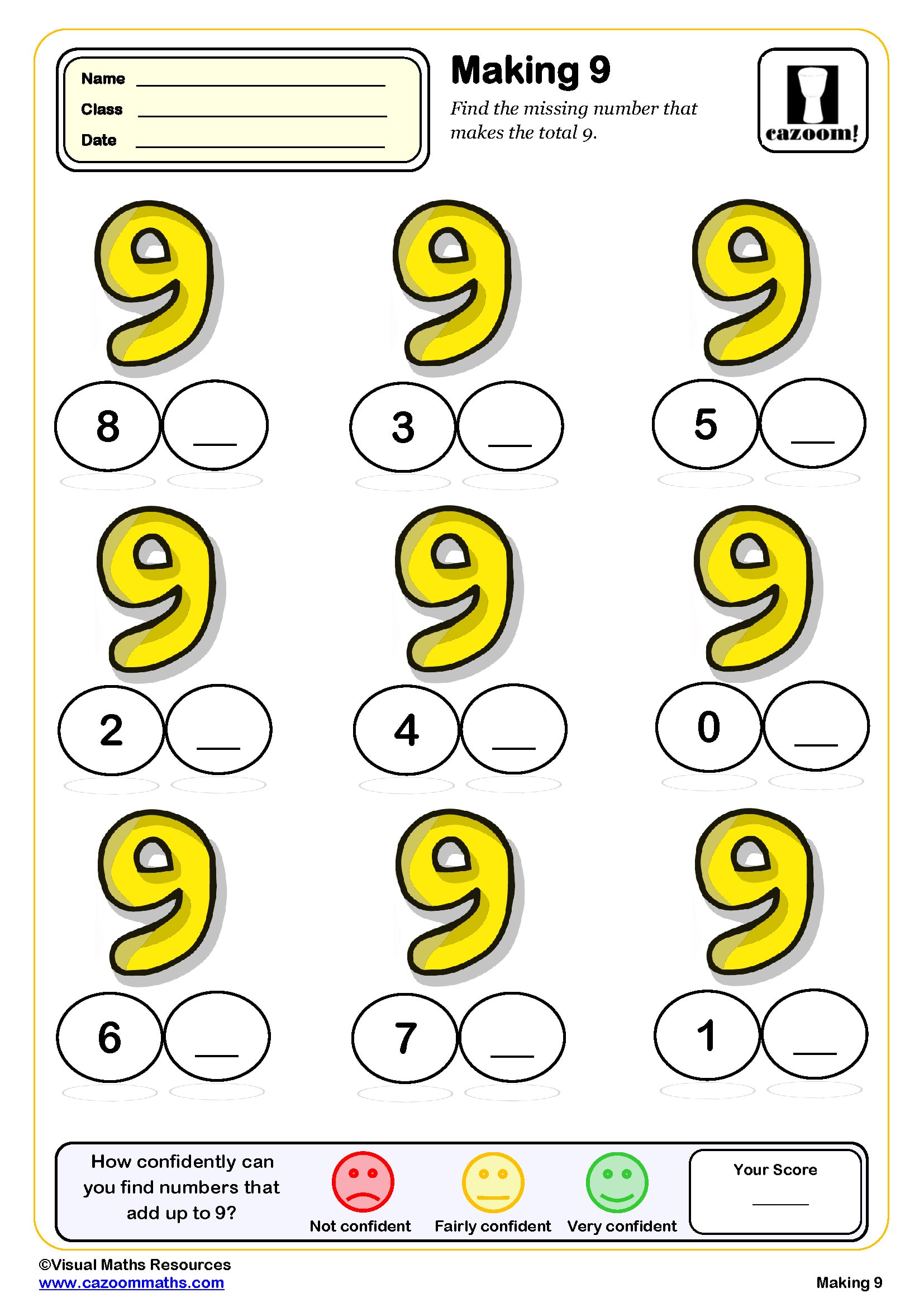
Making 9 (Blanks)
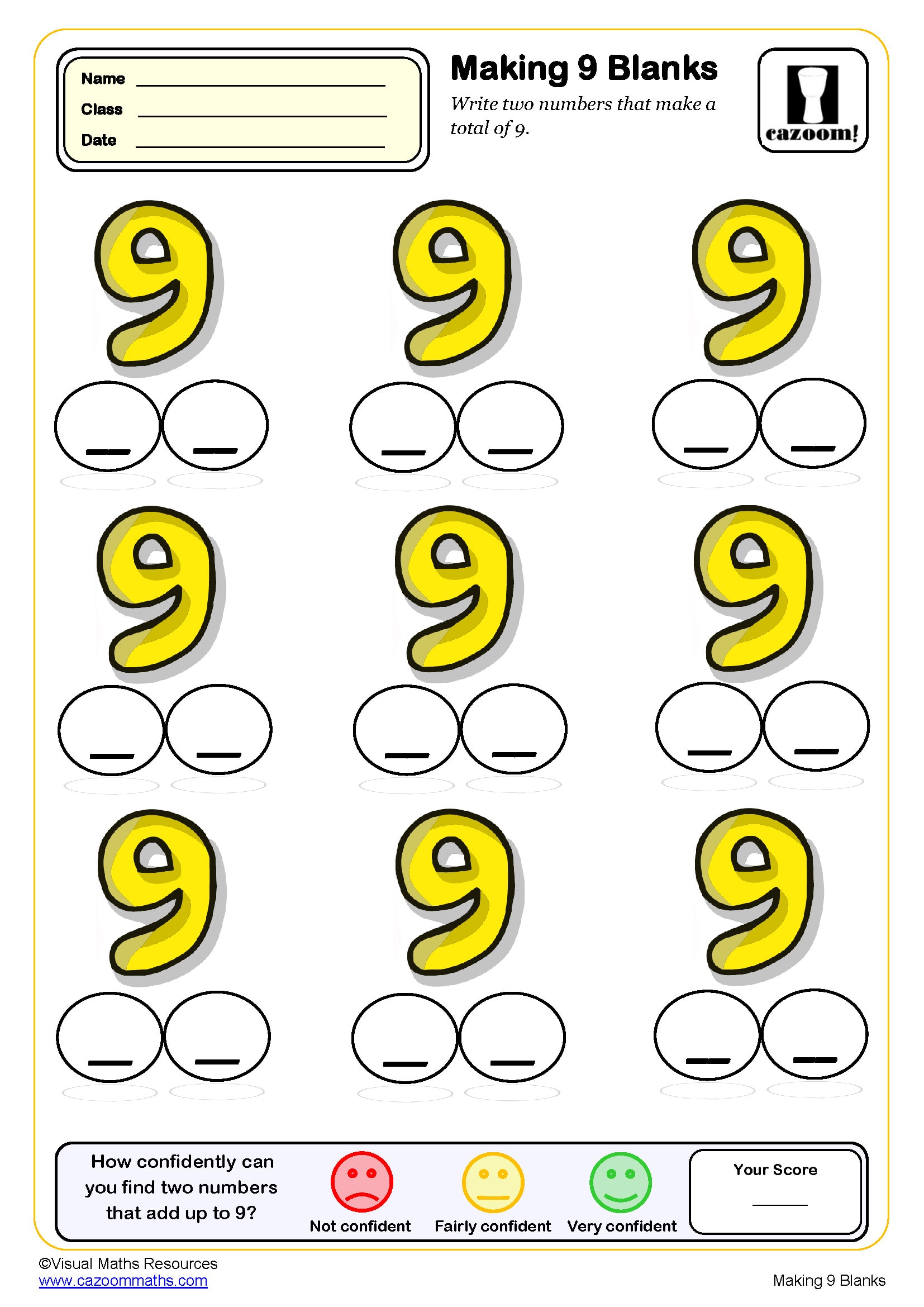
Matching sums (20 only)
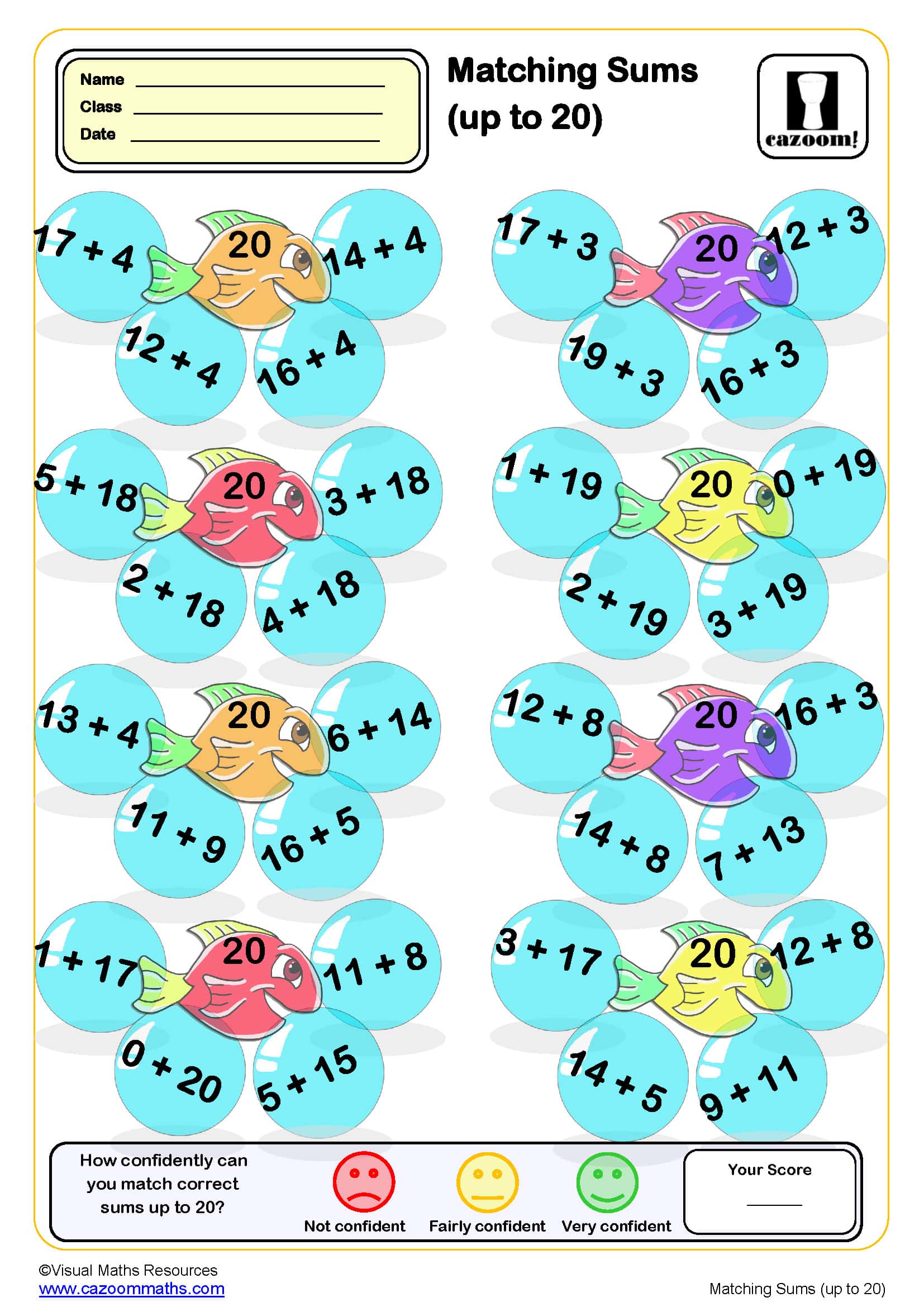
Matching Sums (to 10)
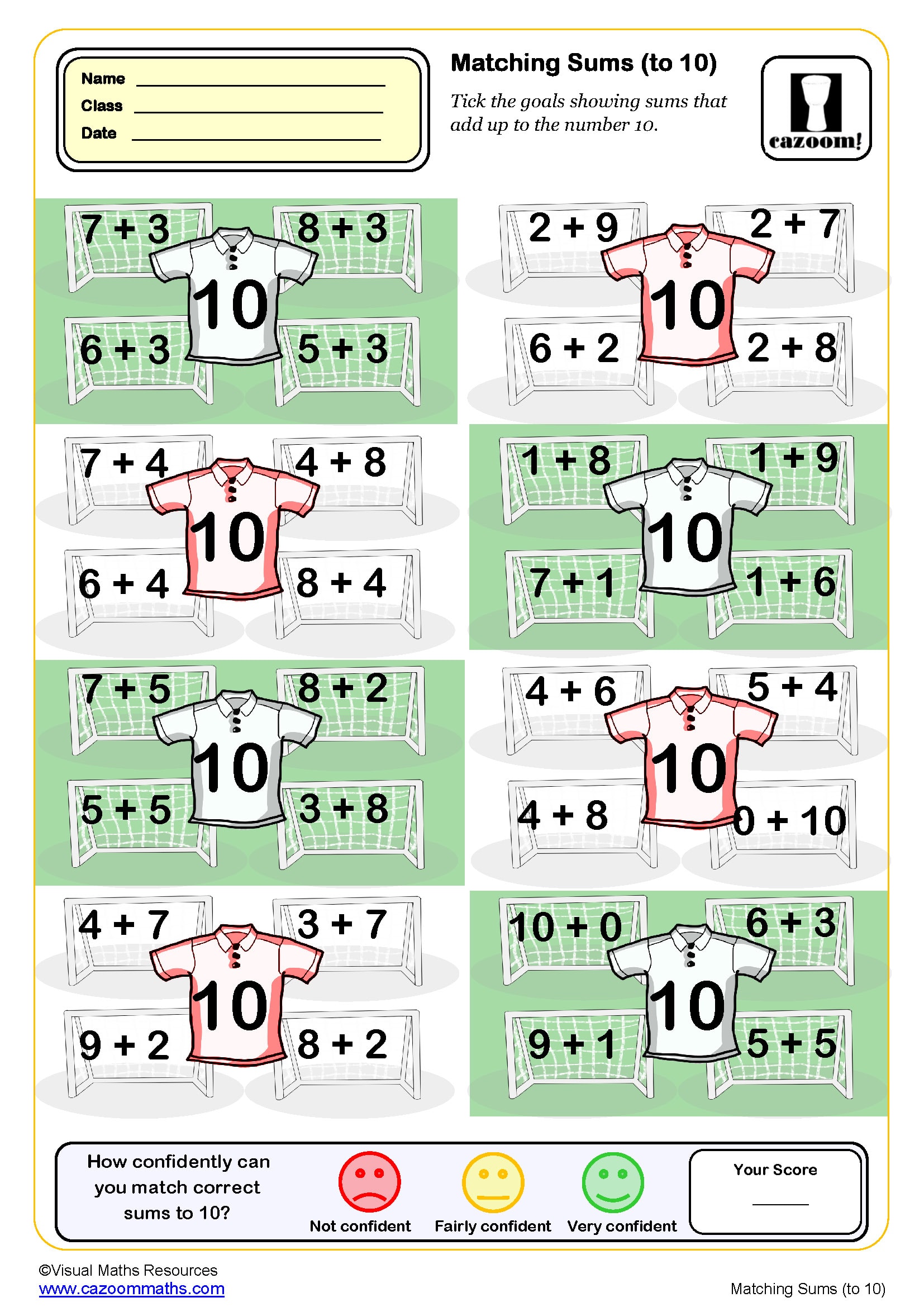
Number Bonds to 10 - Ten Frames
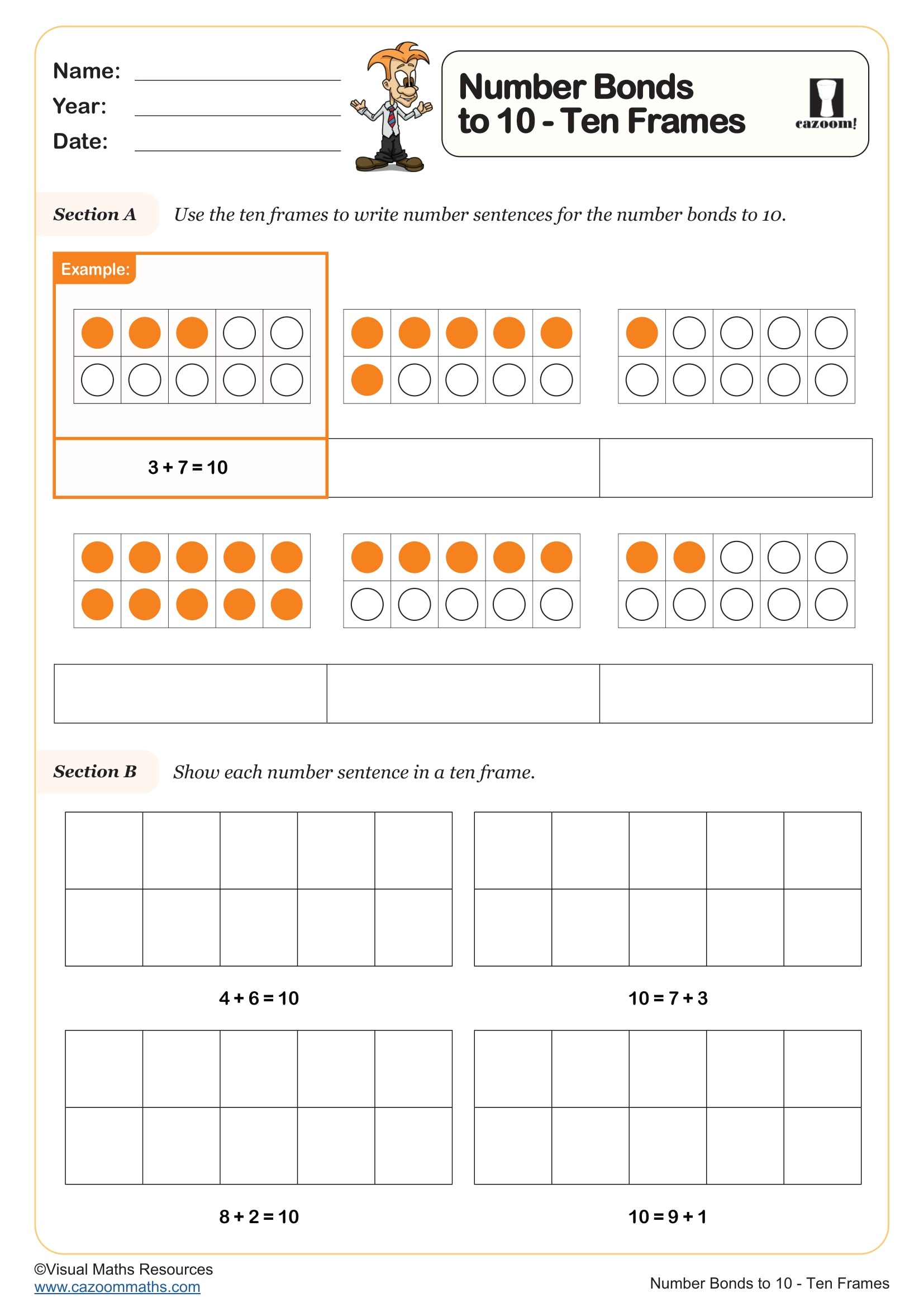
Number Bonds to 10 drills (10 questions)
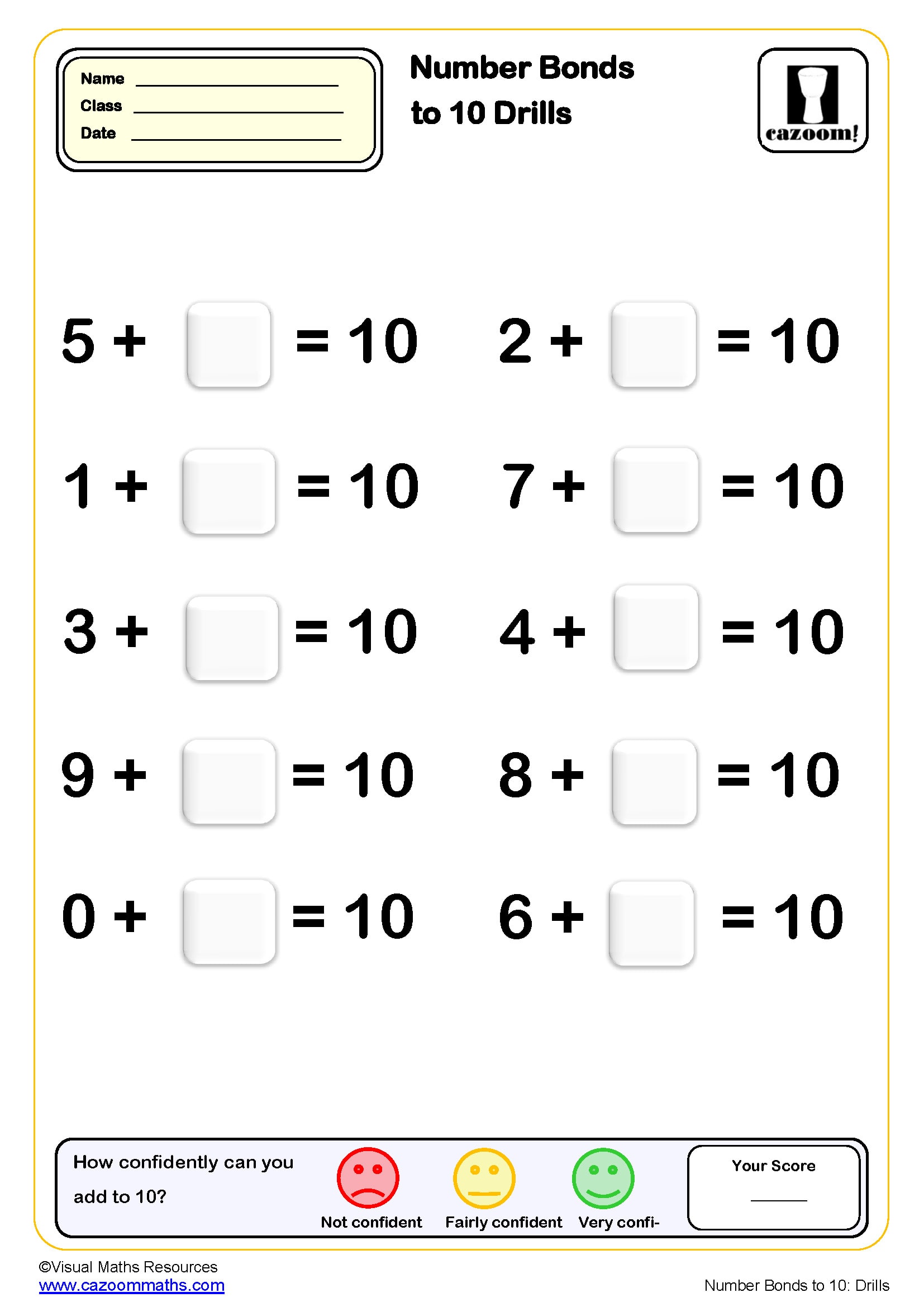
Number Bonds to 10 drills (20 questions)
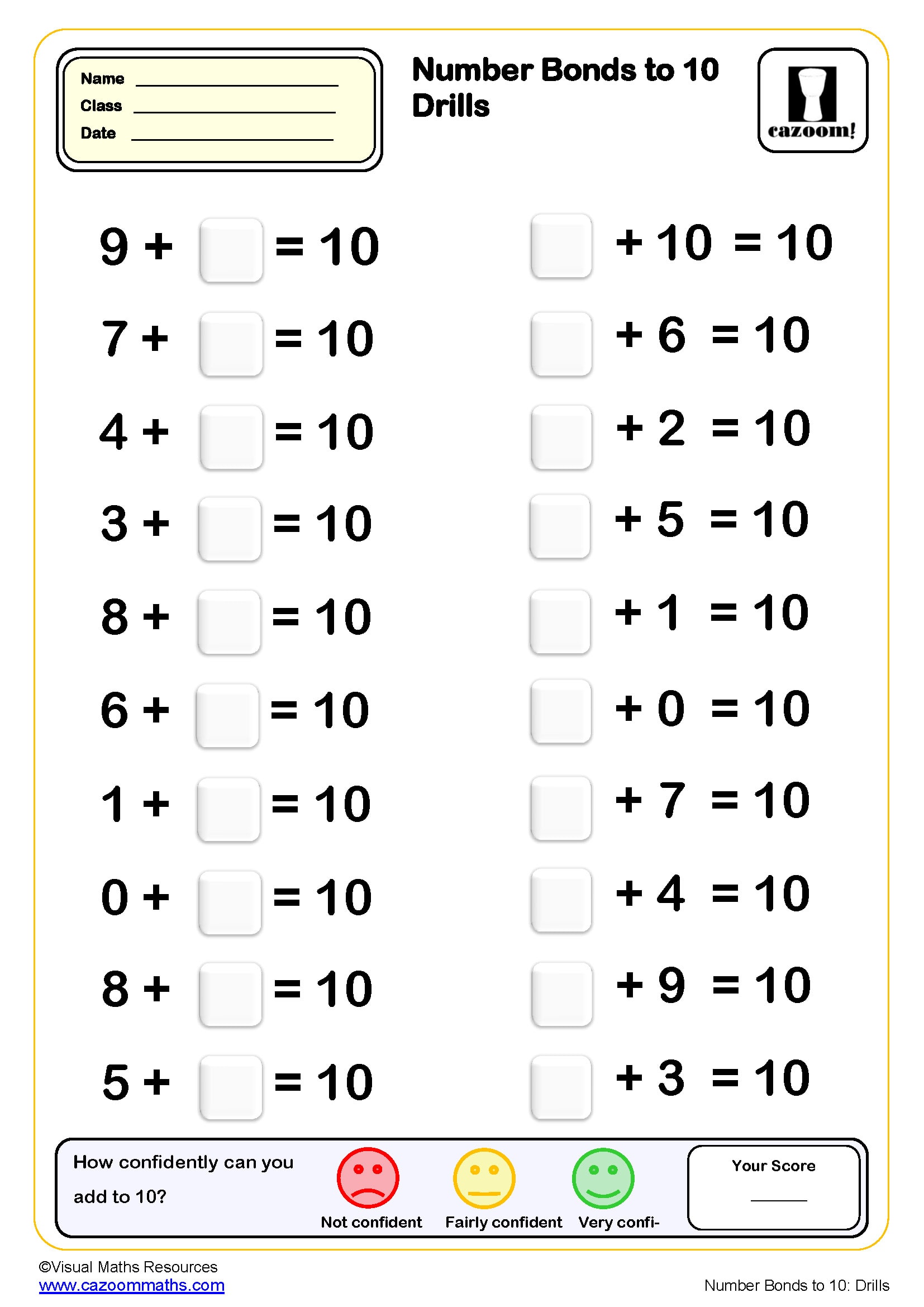
Number Bonds to 10 drills (50 questions)
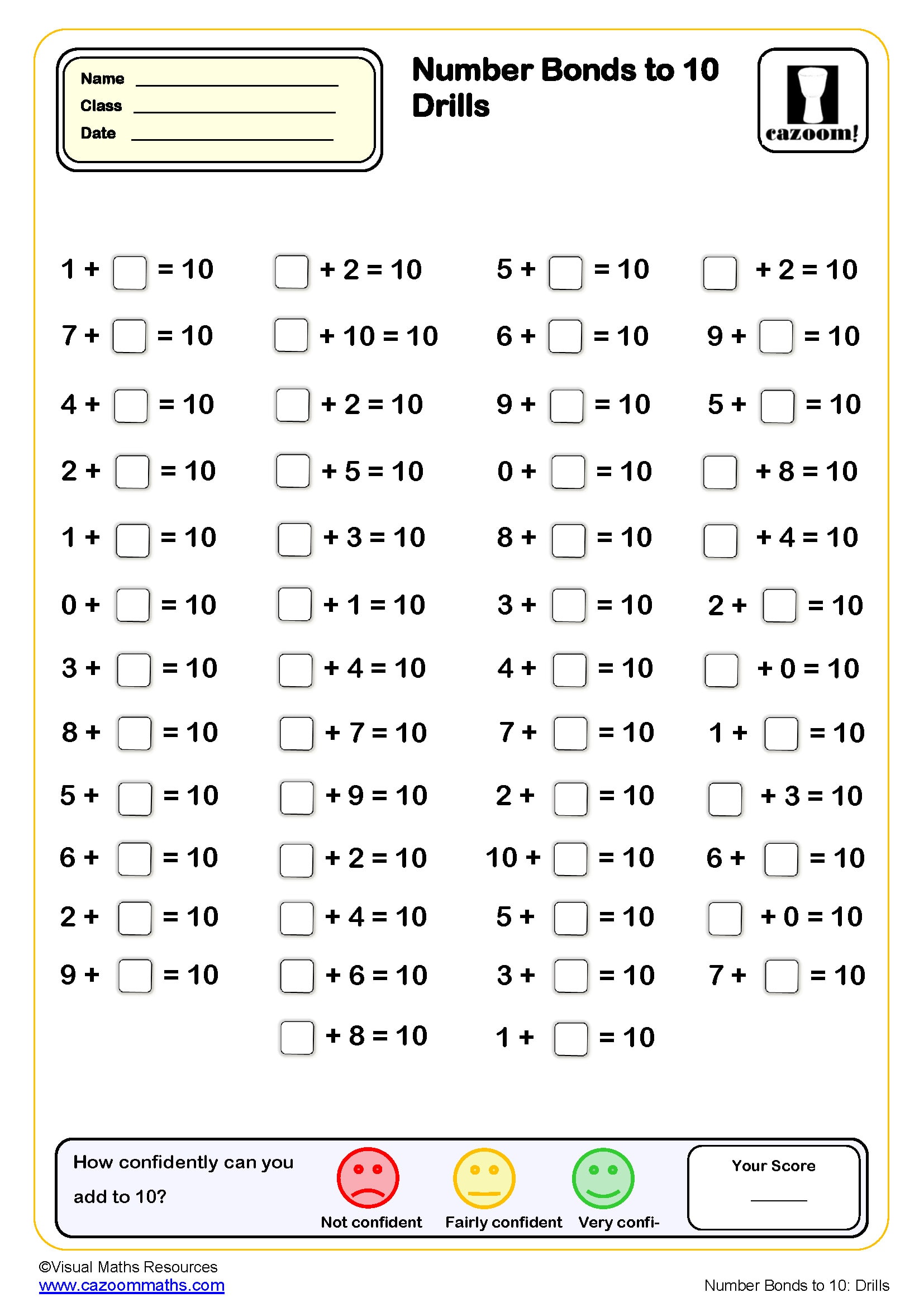
Number Bonds to 10 with Dots
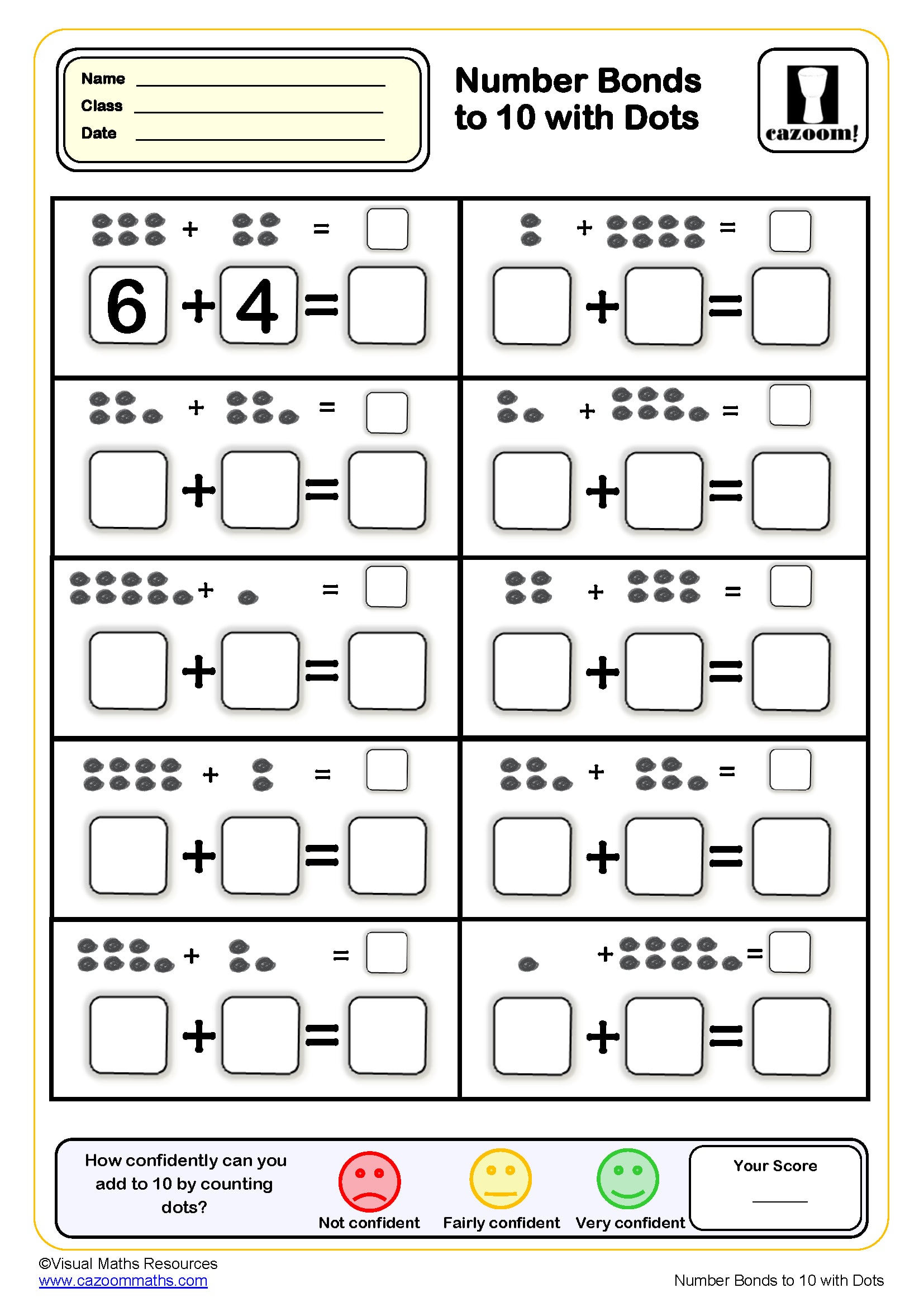
Number bonds to 10 with number lines
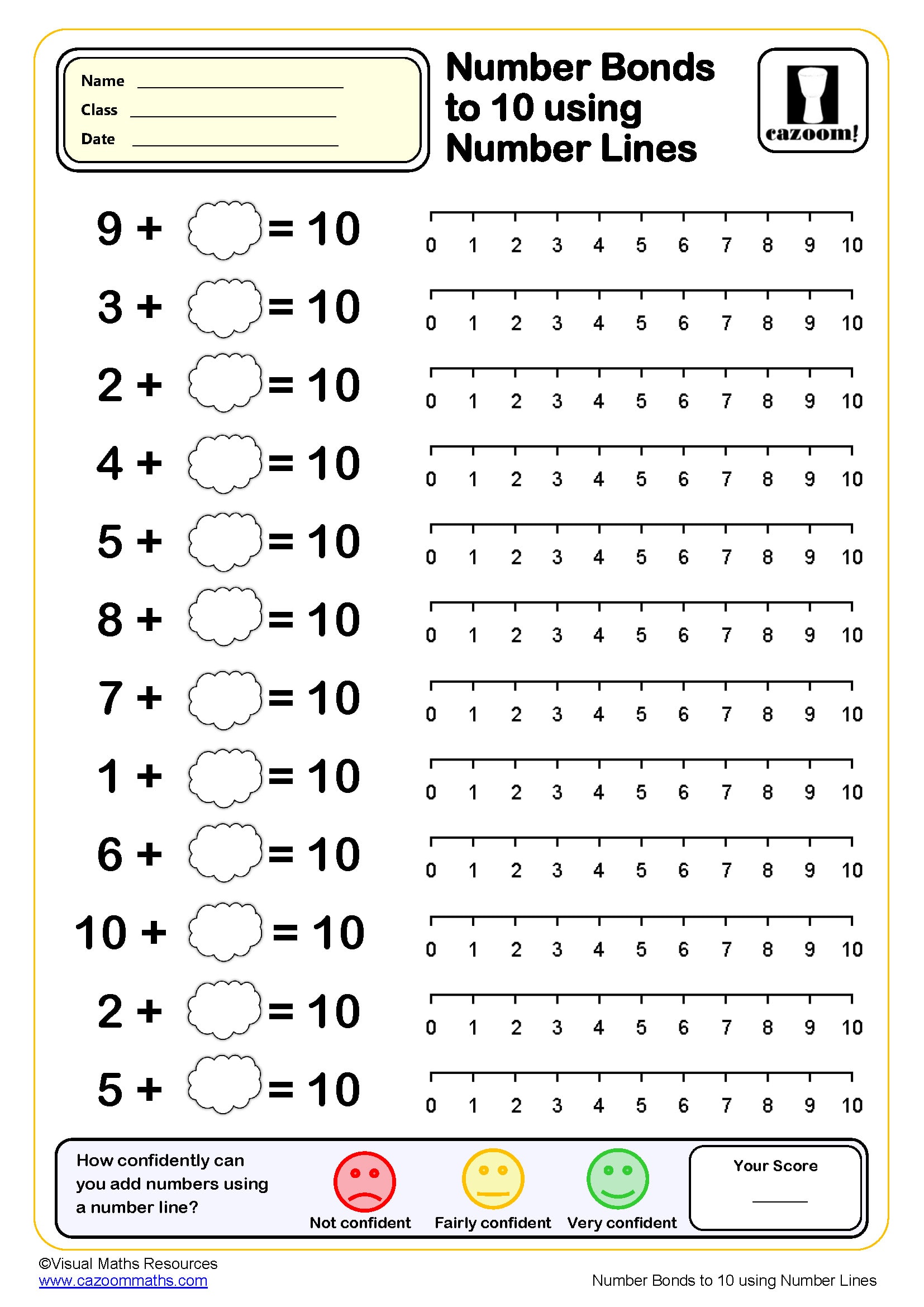
Number Bonds to 20 drills (10 questions)
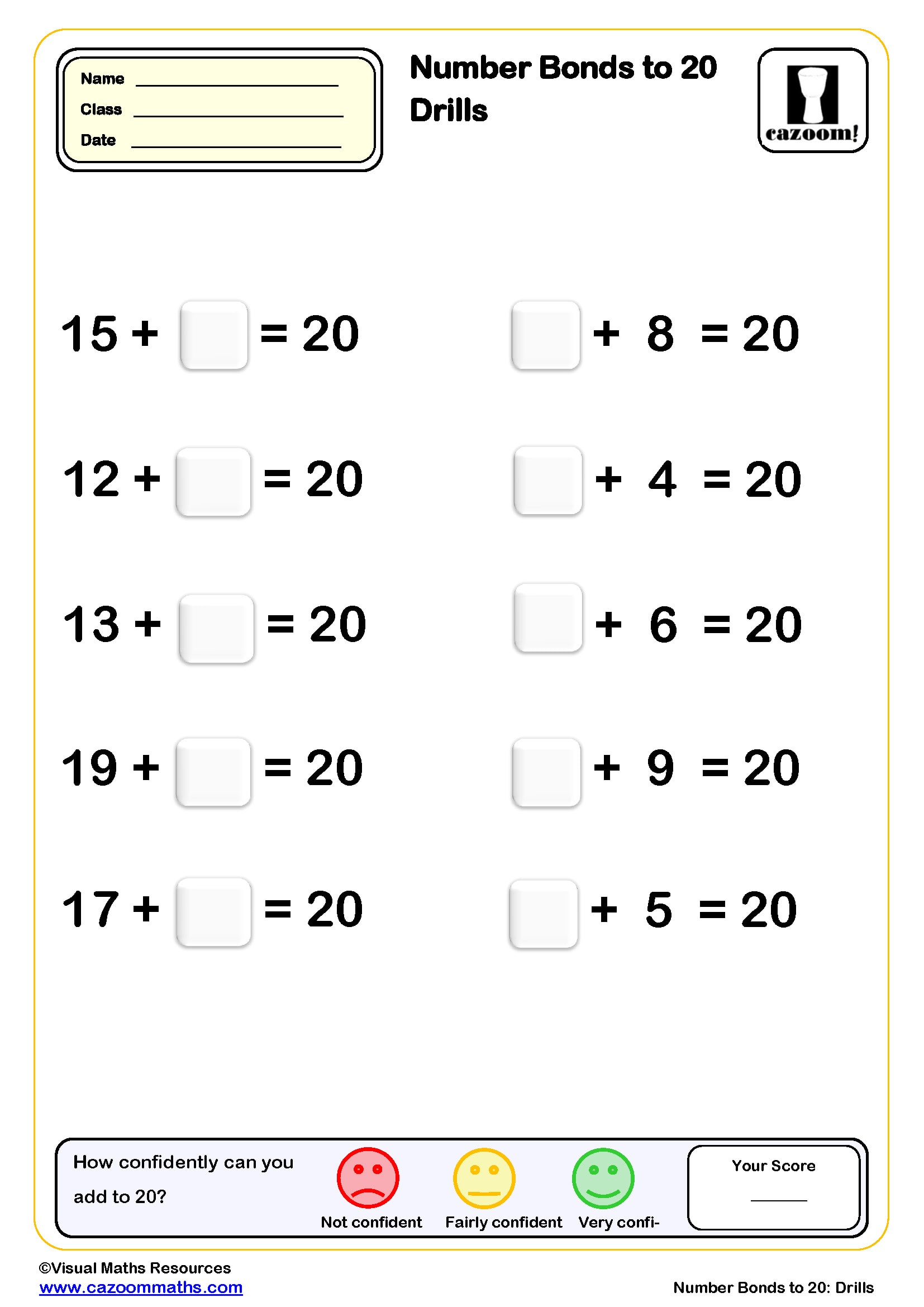
Number Bonds to 20 drills (20 questions)
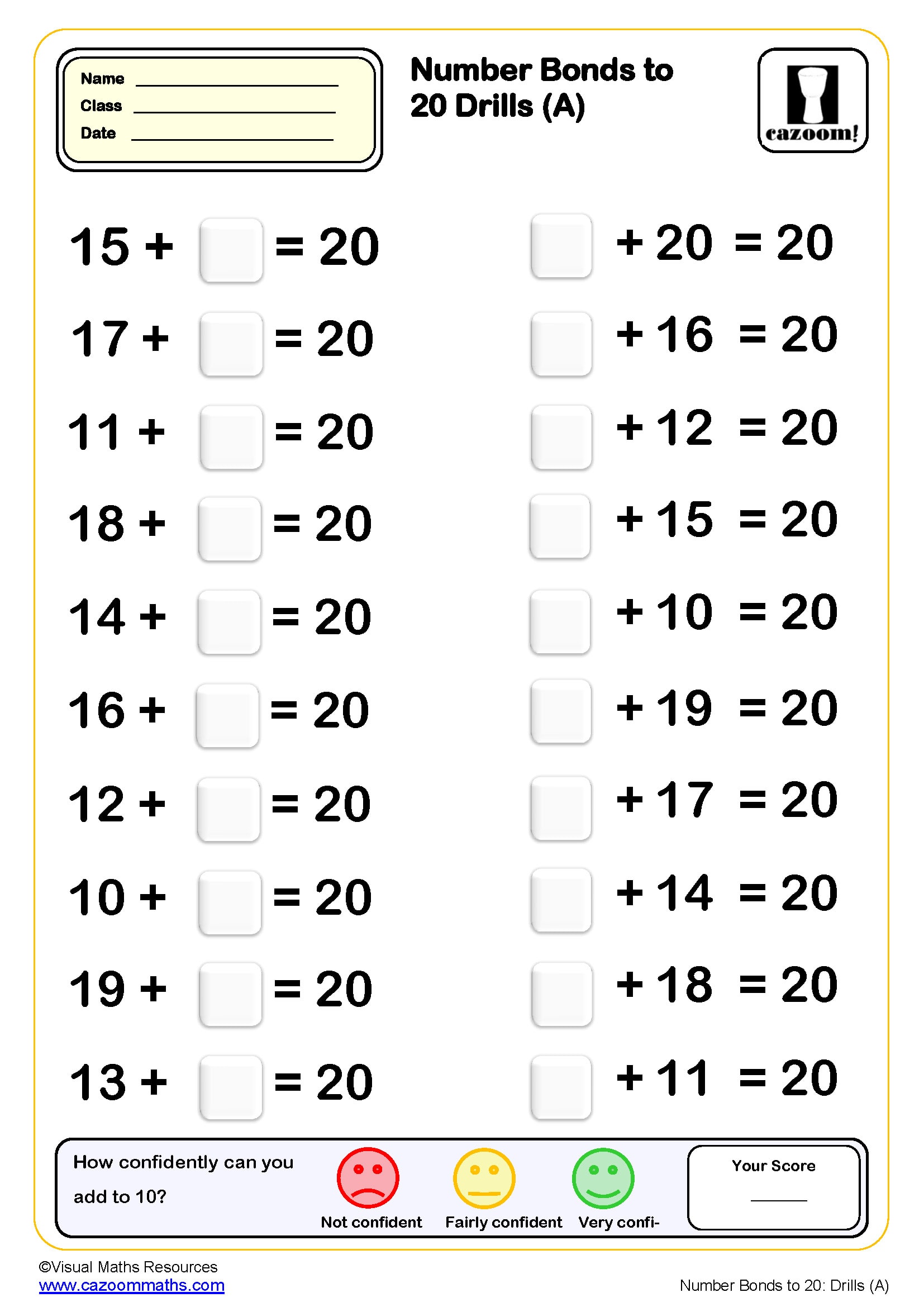
Number Bonds to 20 drills (50 questions)
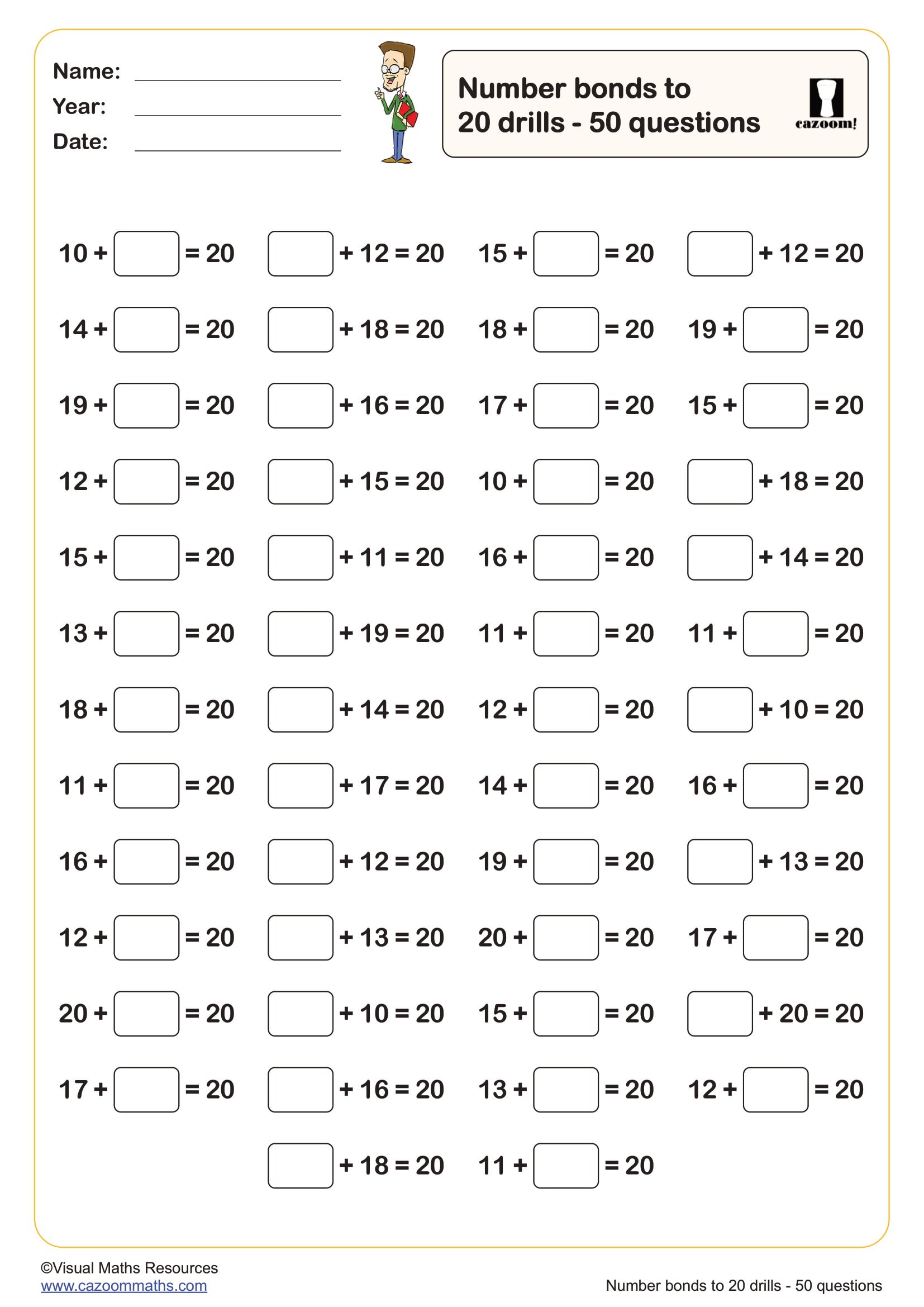
Number Bonds to 20 drills (B) (20 questions)
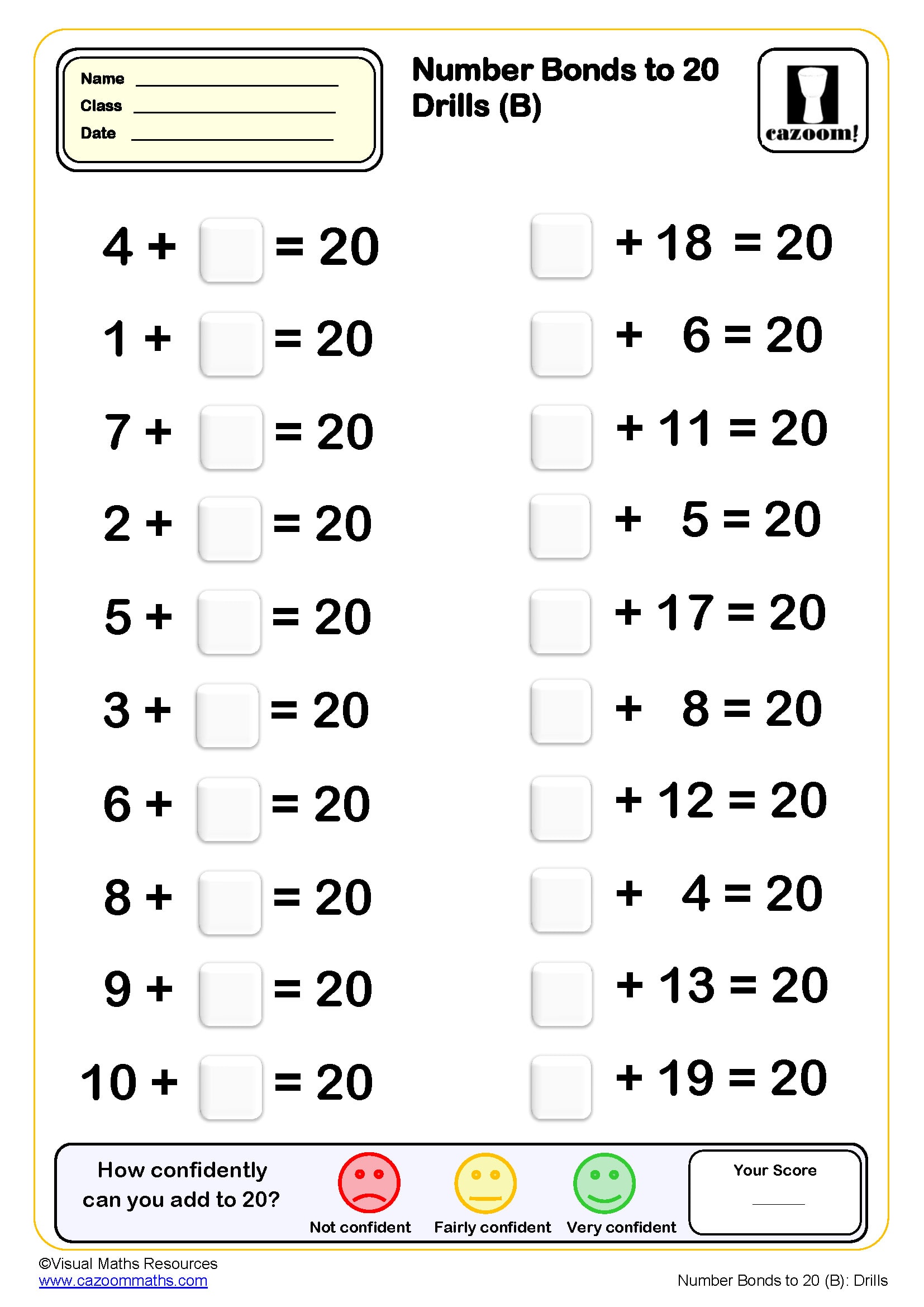
Number Bonds to 20 drills (B) (50 questions)
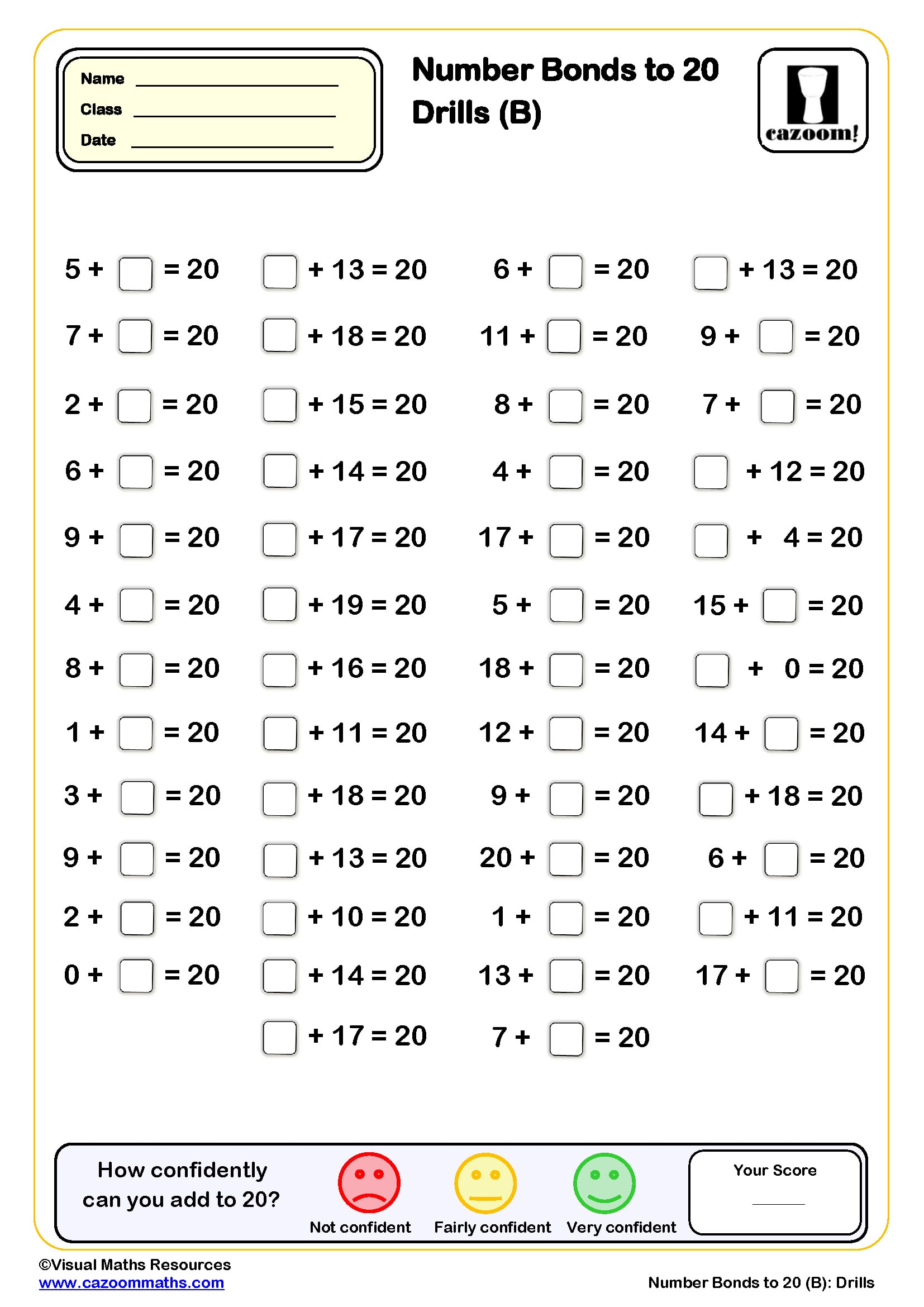
Number bonds to 20 with dots
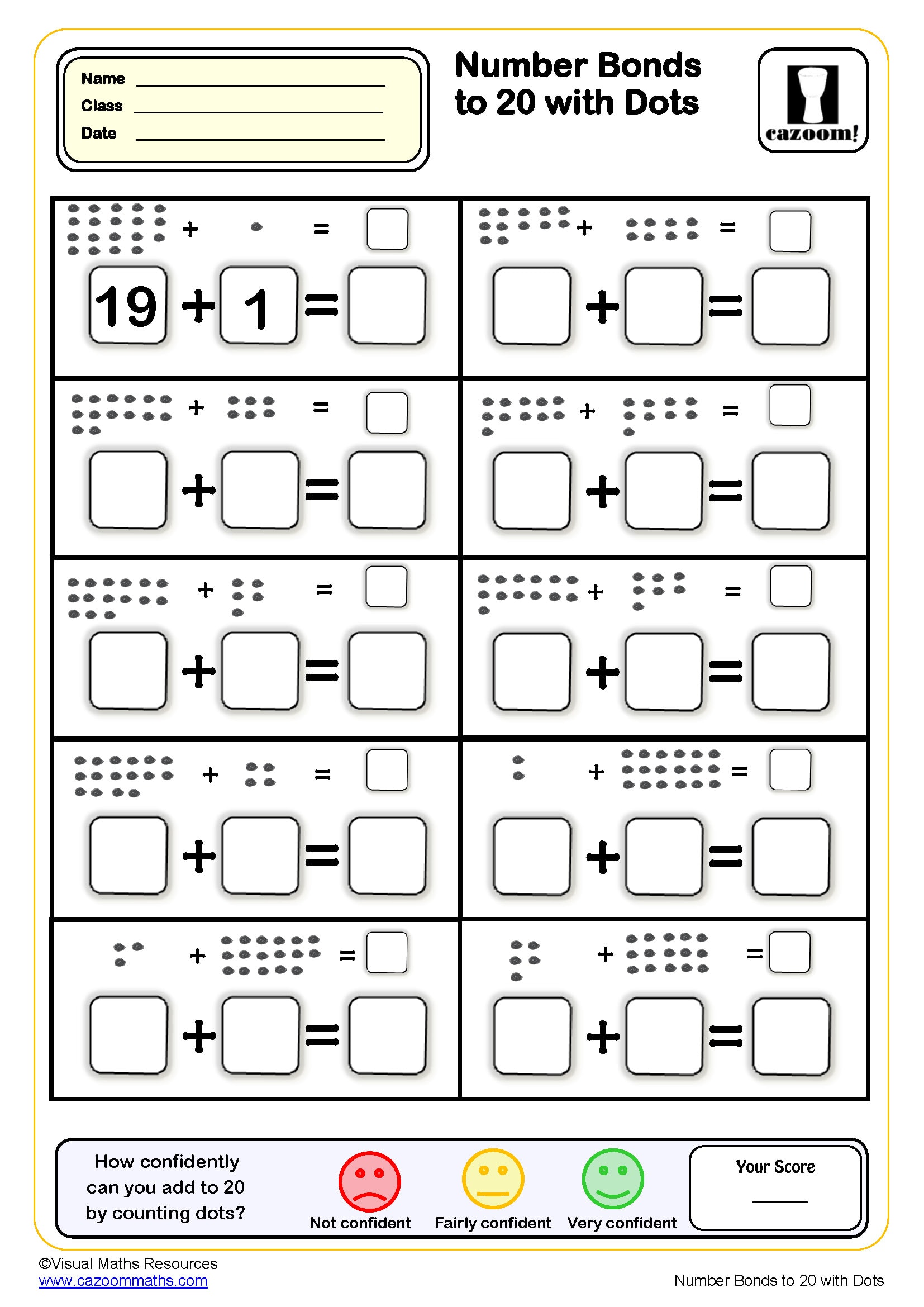
Number bonds to 20 with number lines
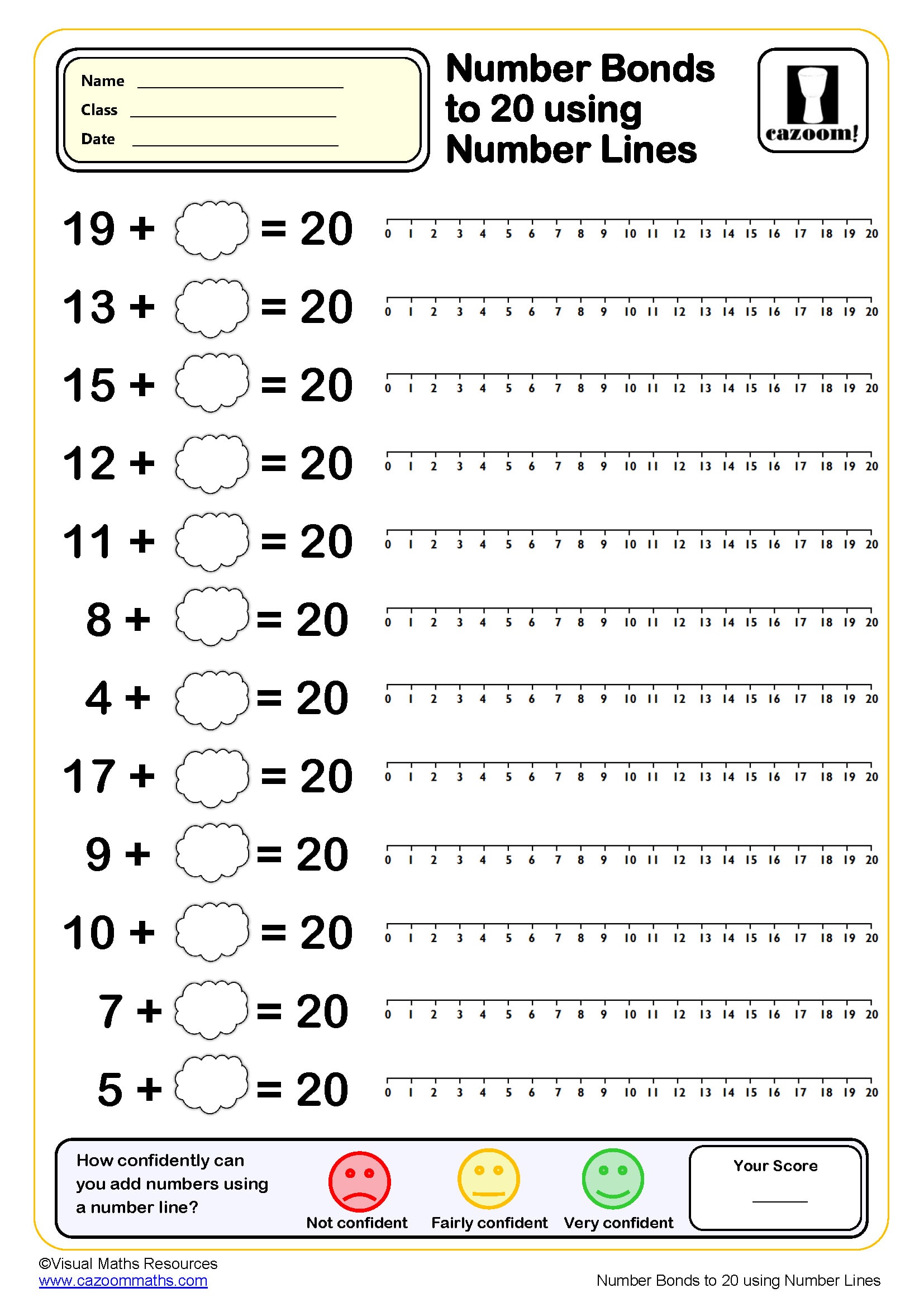
Number Bonds to 5 drills (10 questions)
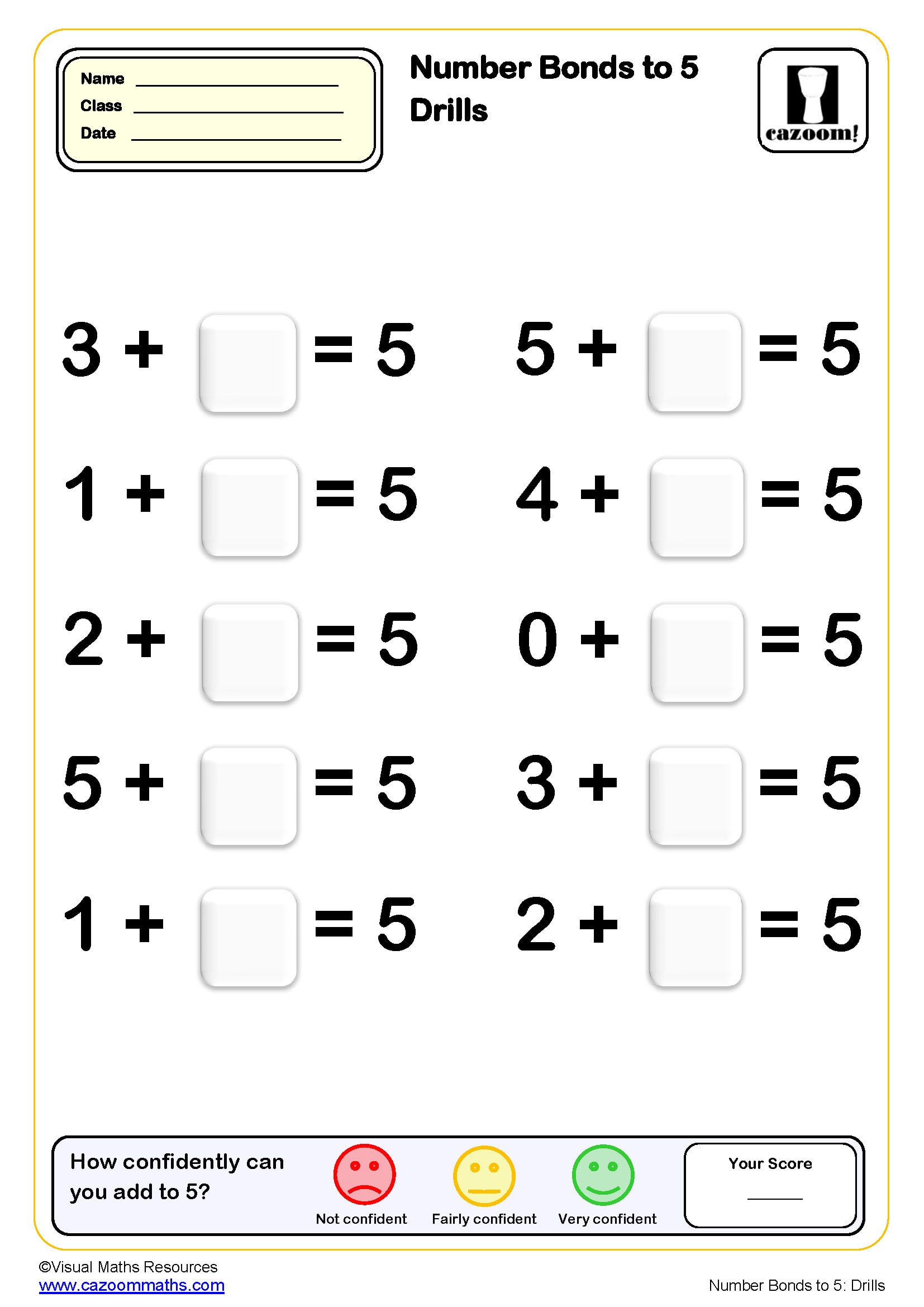
Number Bonds to 5 drills (20 questions)
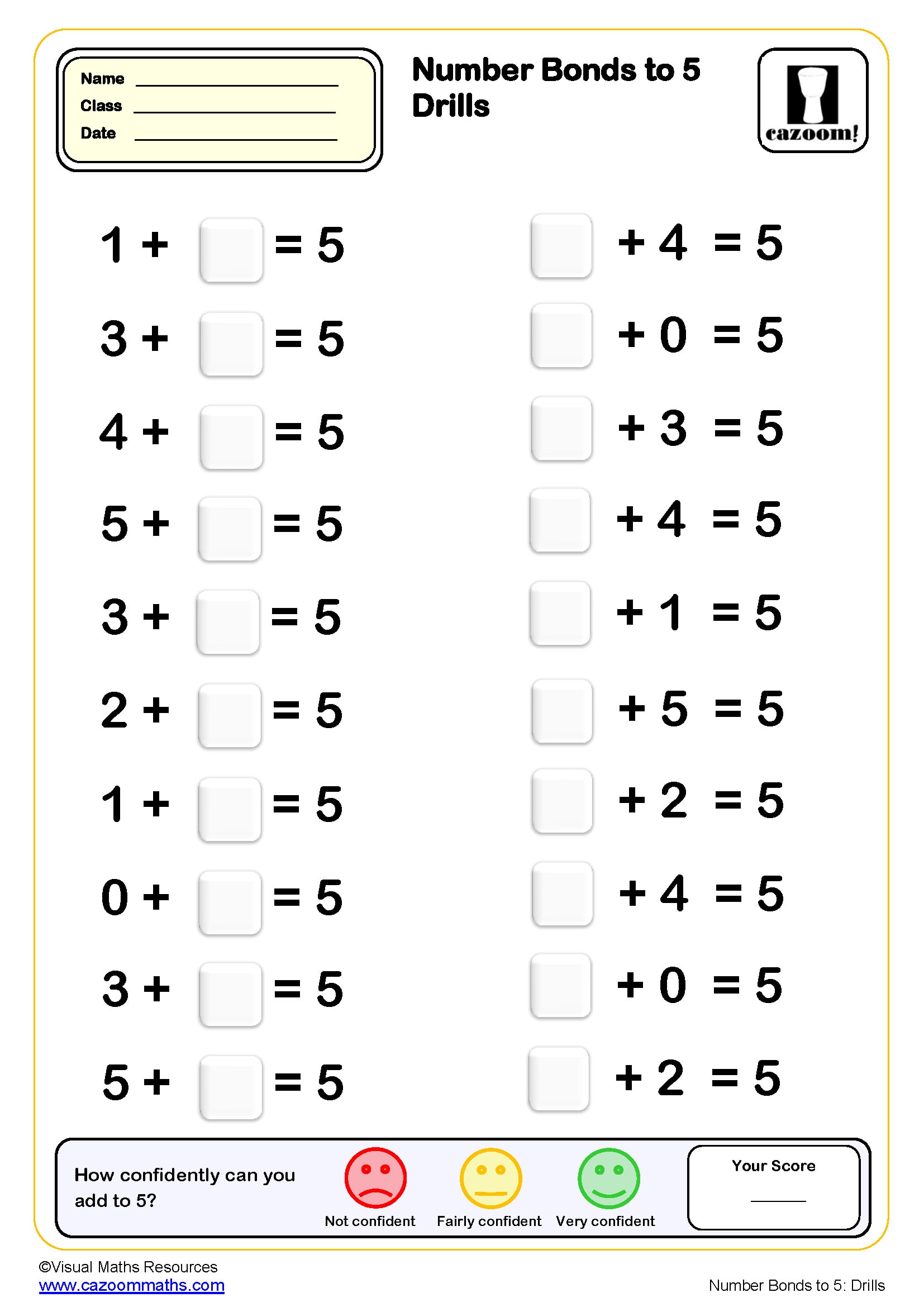
Number Bonds to 5 drills (50 questions)
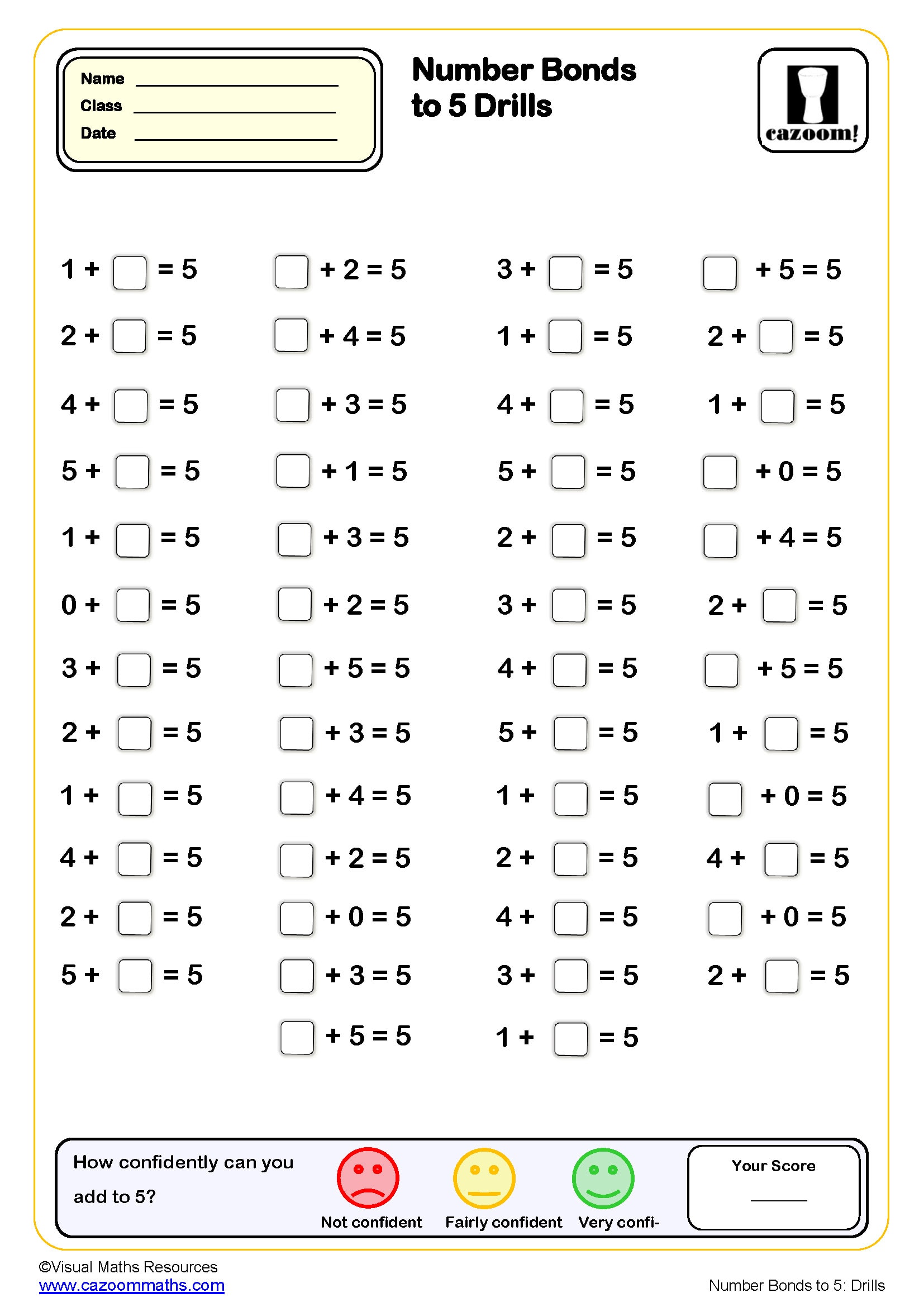
Printable Year 1 Number Bonds to 20 Worksheets PDF
Check out and download our KS1 number bonds worksheets pdf which will improve your student's knowledge of basic number bonds with the help of visual aids related to simple addition facts, for example- Number Bonds to 10, Number Bonds to 20, Missing Number Problems, Ten Frames Activities, Part-Whole Models, Addition Pairs, and many more. All of our basic number resources are specially custom-made in printable PDF format, and all of these resources include separate answer sheets to facilitate the easy checking process.
What Are Number Bonds up to 20 in Mathematics?
Number bonds up to 20 in Year 1 mathematics use concrete objects and pictures to make addition facts easier for young learners. Number bonds worksheets help children understand how numbers combine through hands-on counting activities and colourful illustrations. For example, when learning number bonds to 10, children might use five red counters and five blue counters, or picture objects on their KS1 maths worksheets. Students start with physical manipulation of objects, then learn that 5 + 5 = 10, 6 + 4 = 10, and 7 + 3 = 10. This visual number bonds method supports different learning styles and builds strong mathematical foundations for Year 1 pupils effectively.
Why Number Bonds Are Key to Early Maths Success
Number bonds worksheets support different learning styles and make maths accessible to all children. Many young learners understand addition facts better when they see concrete representations first. These resources build confidence before children move to abstract number work alone. Visual learning helps children remember number bonds more effectively through memorable images and number patterns.
• Support different learning styles.
• Make abstract number concepts concrete.
• Build confidence in learners
• Improve memory through visual number bonds
Real-Life Applications of Number Bonds for Year 1 Maths
Children naturally use number bonds in everyday situations before learning abstract addition methods. Counting toys in two groups, sharing sweets, or organizing items involves number bonds skills in practical contexts. Shopping experiences provide real opportunities to combine amounts using number bond techniques. These natural learning moments reinforce the number bonds skills developed through worksheet practice.
• Counting toys in different groups
• Sharing sweets and snacks equally
• Organizing items into pairs
• Every day addition and combining situations